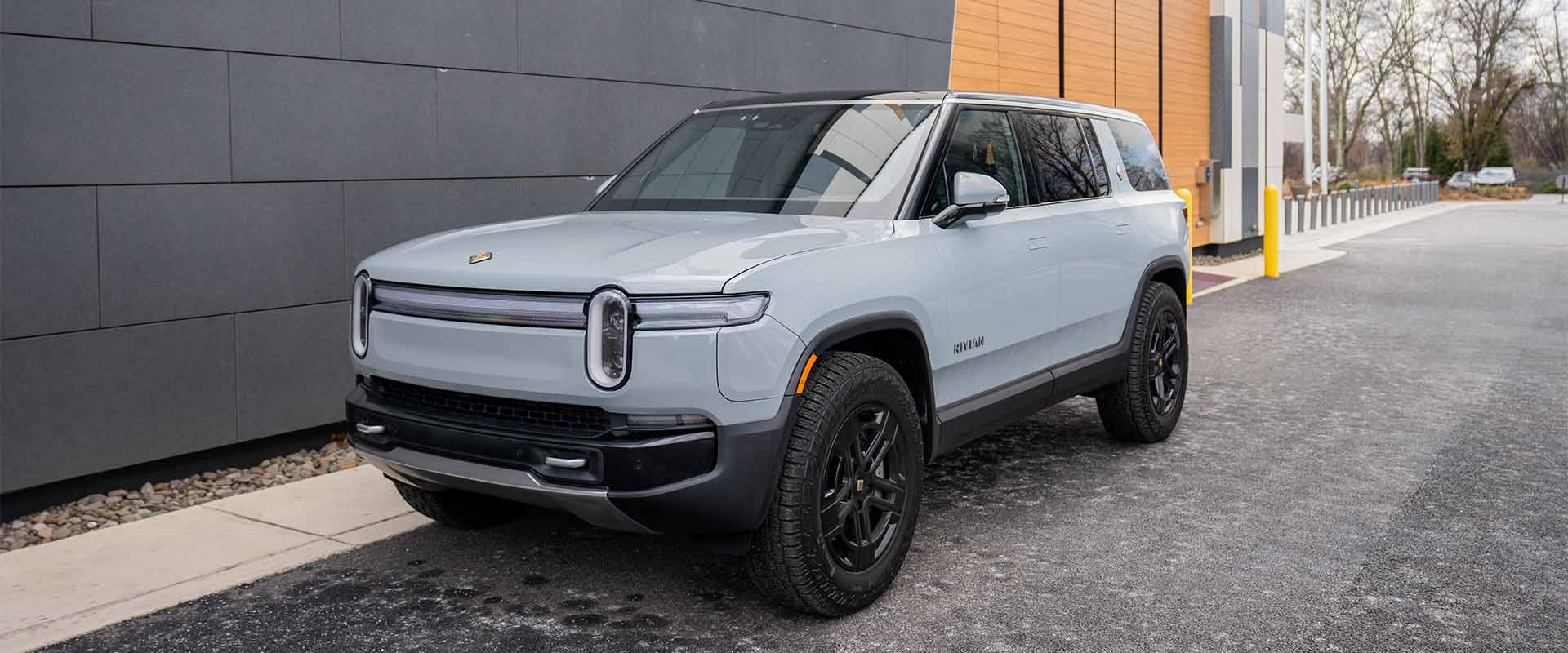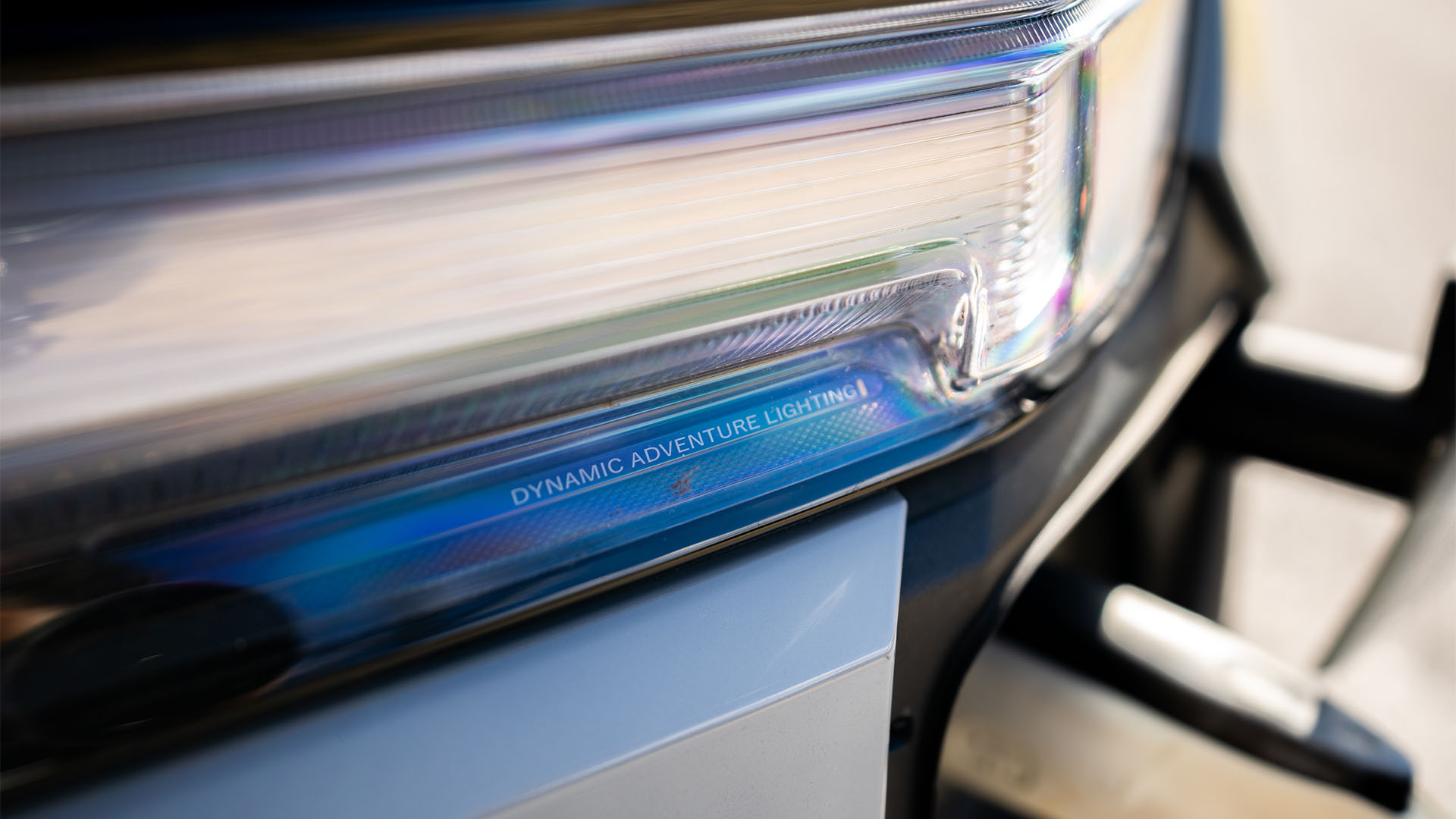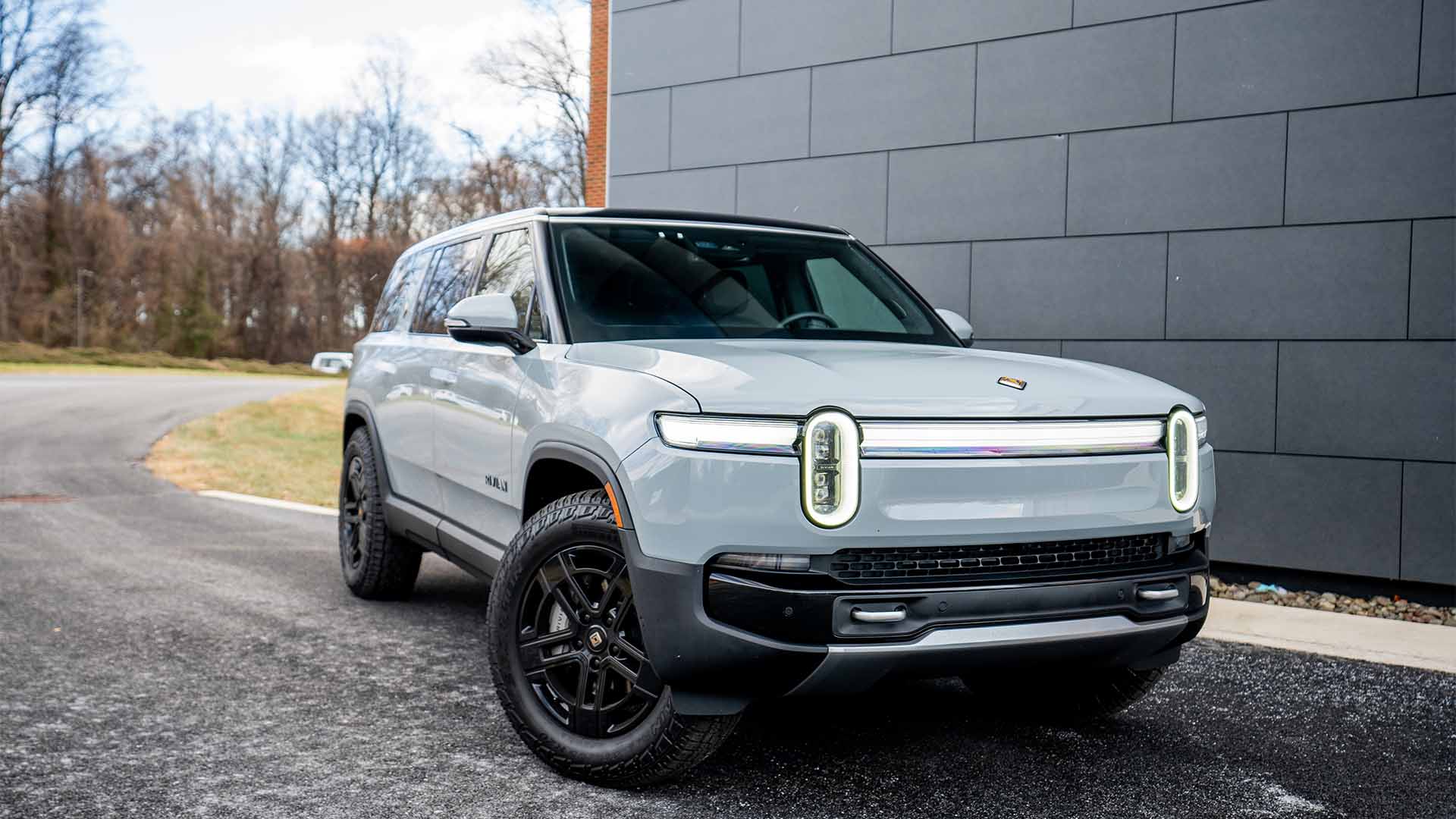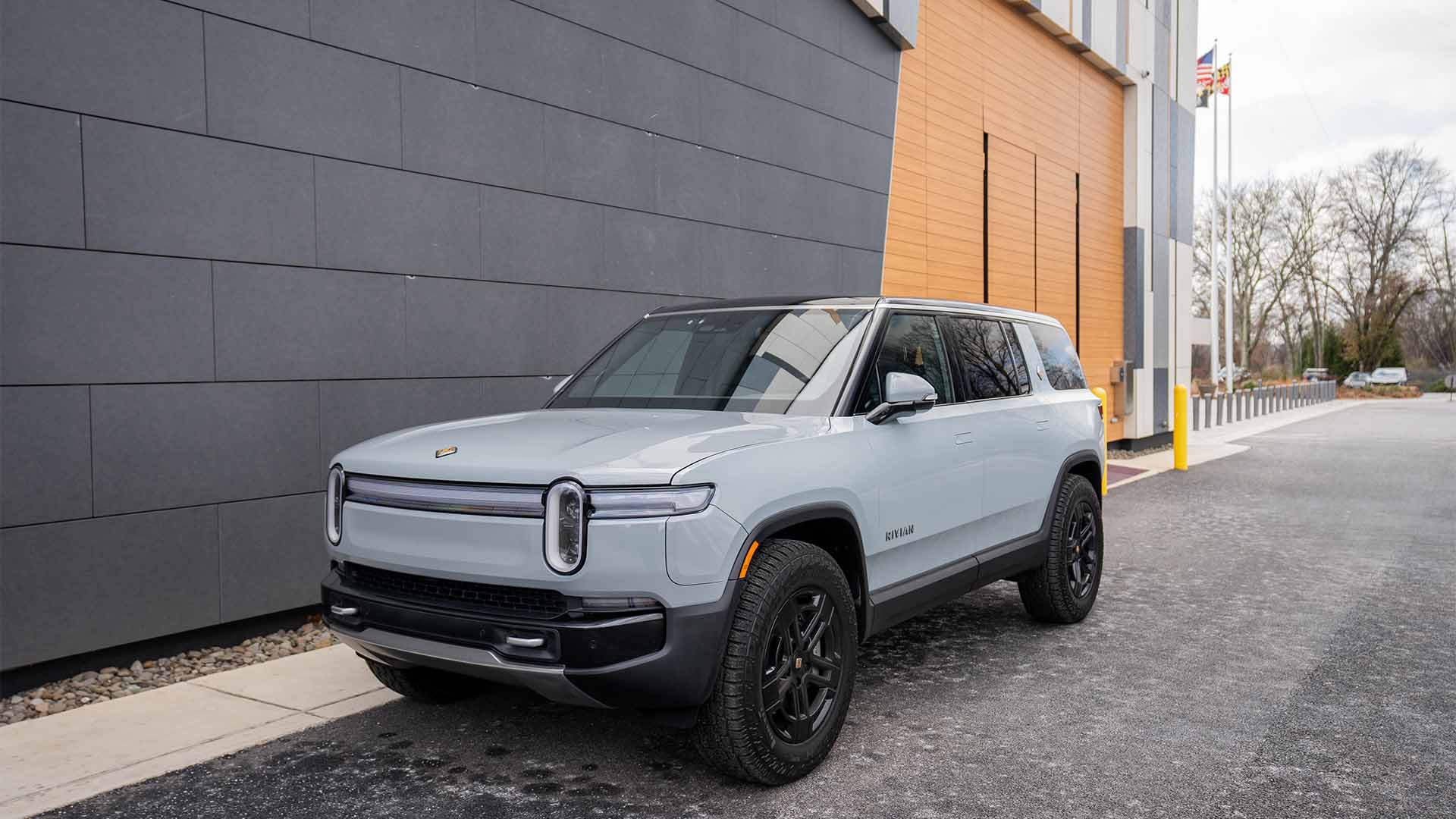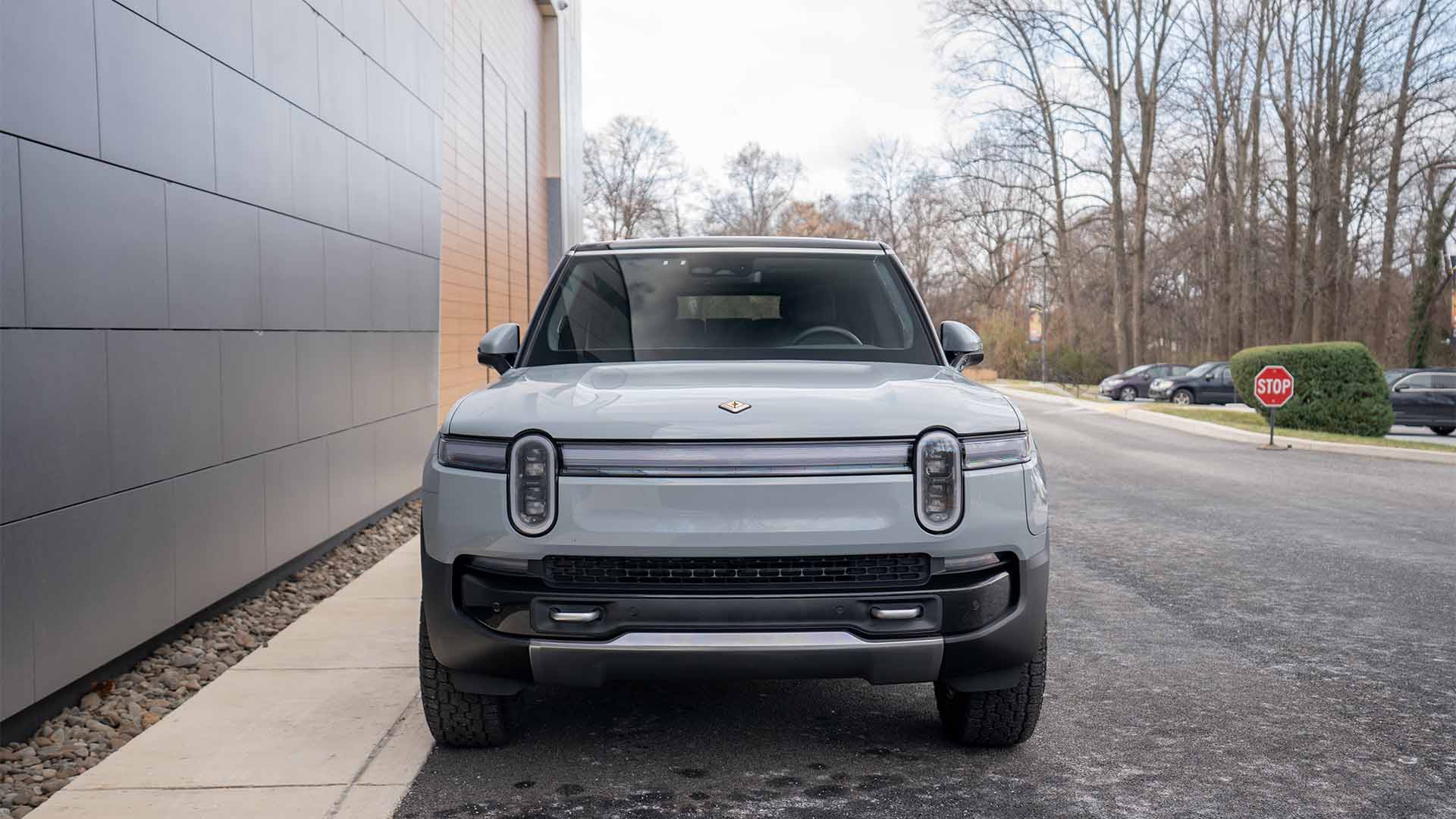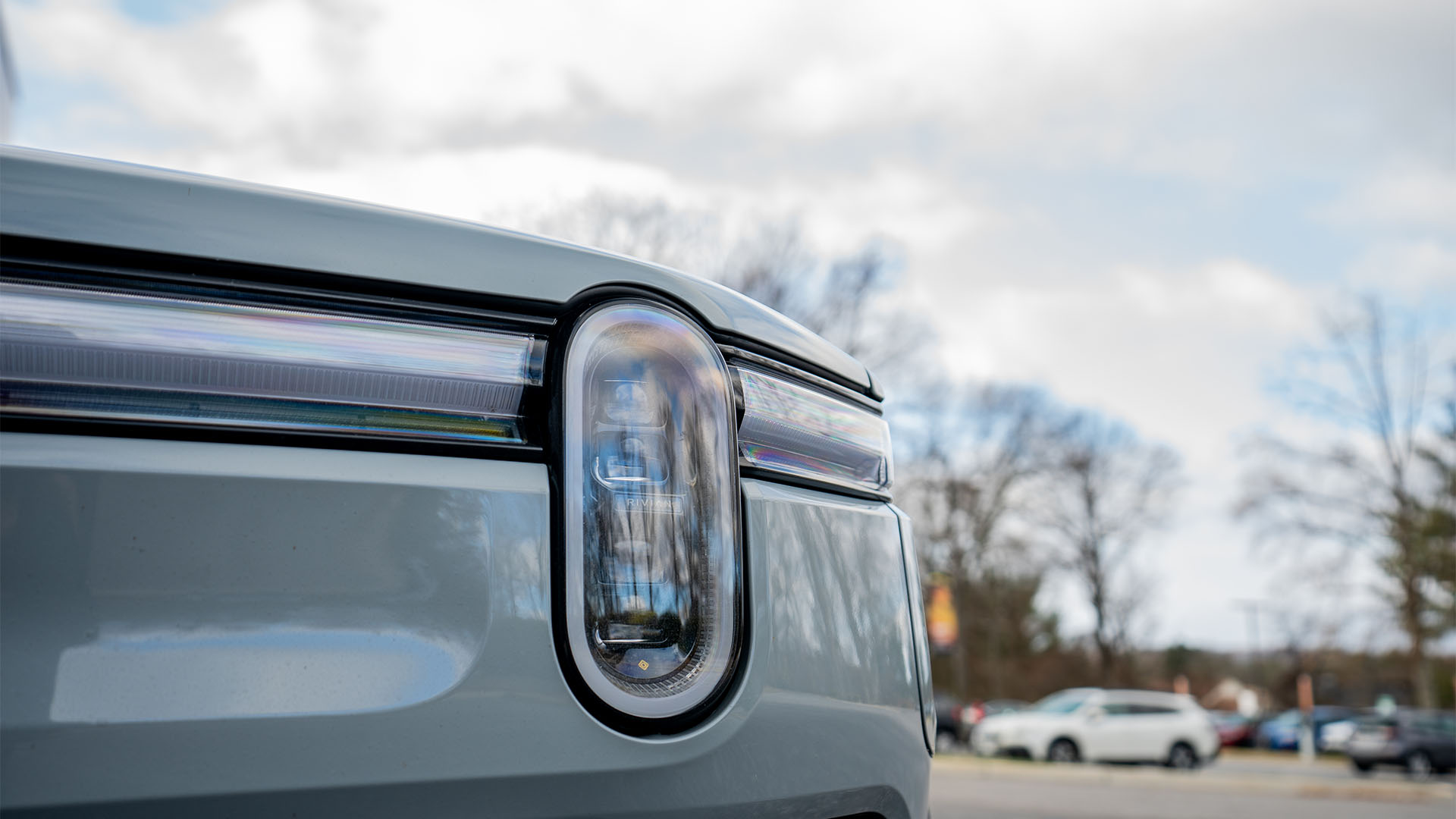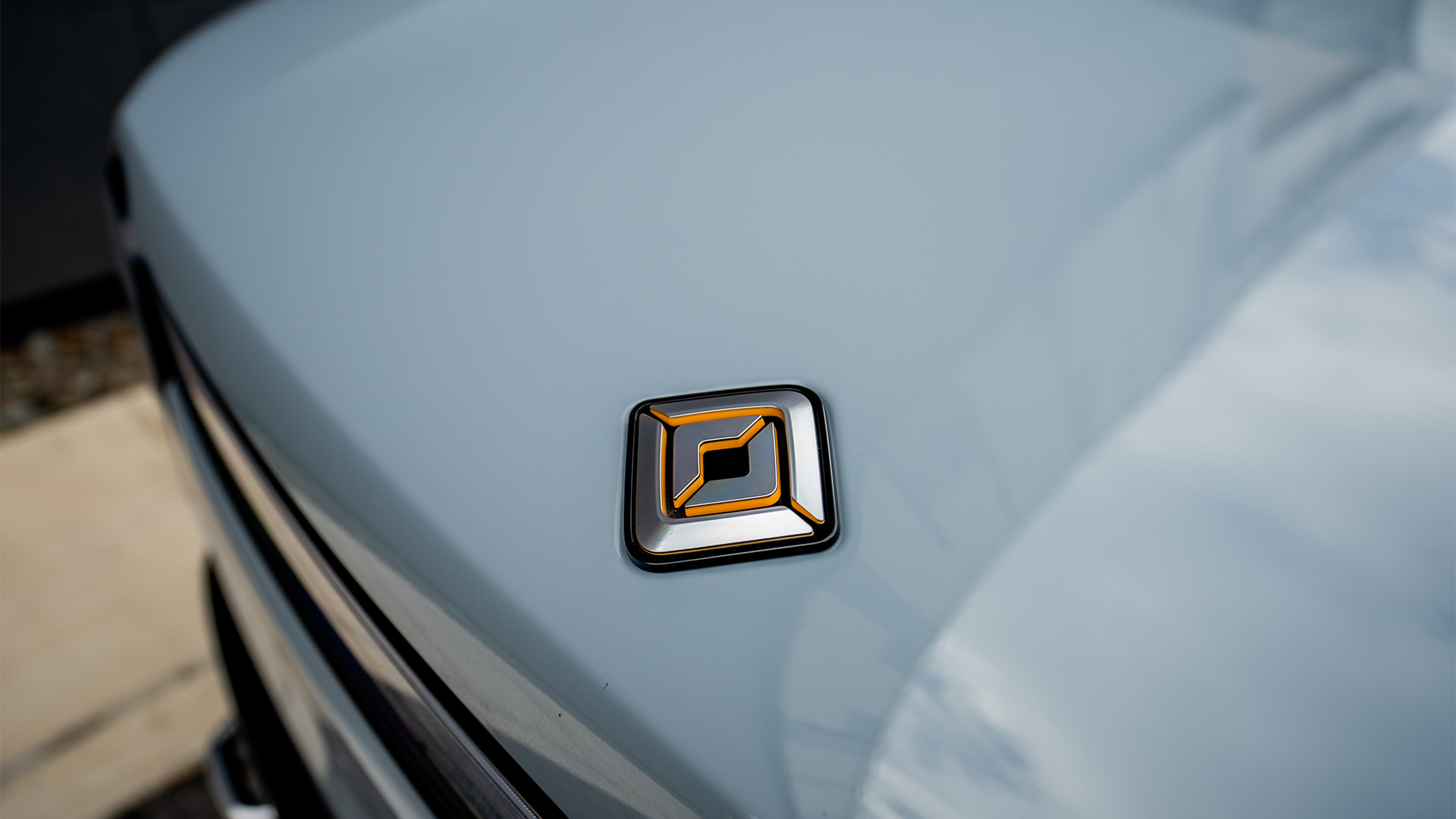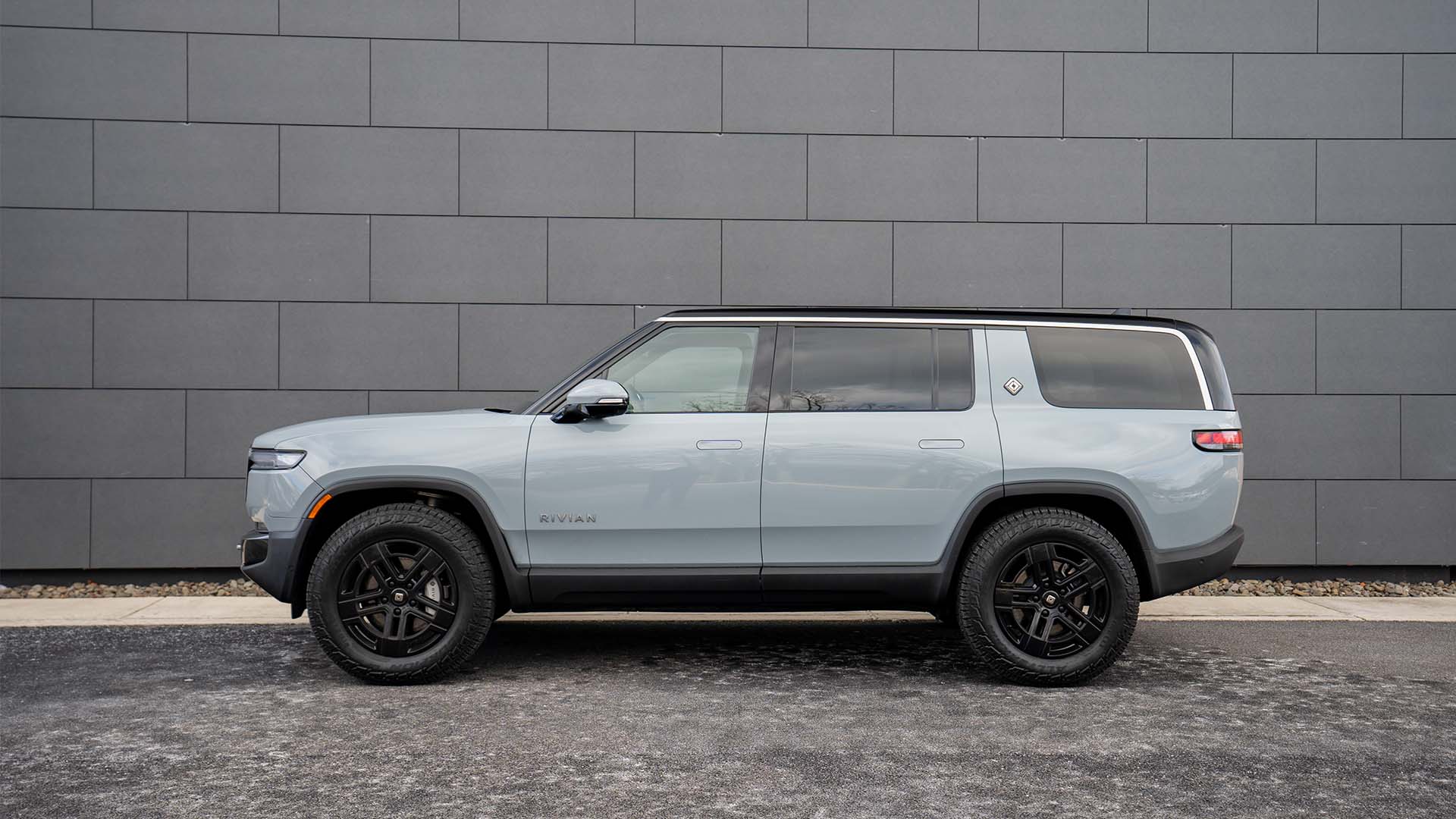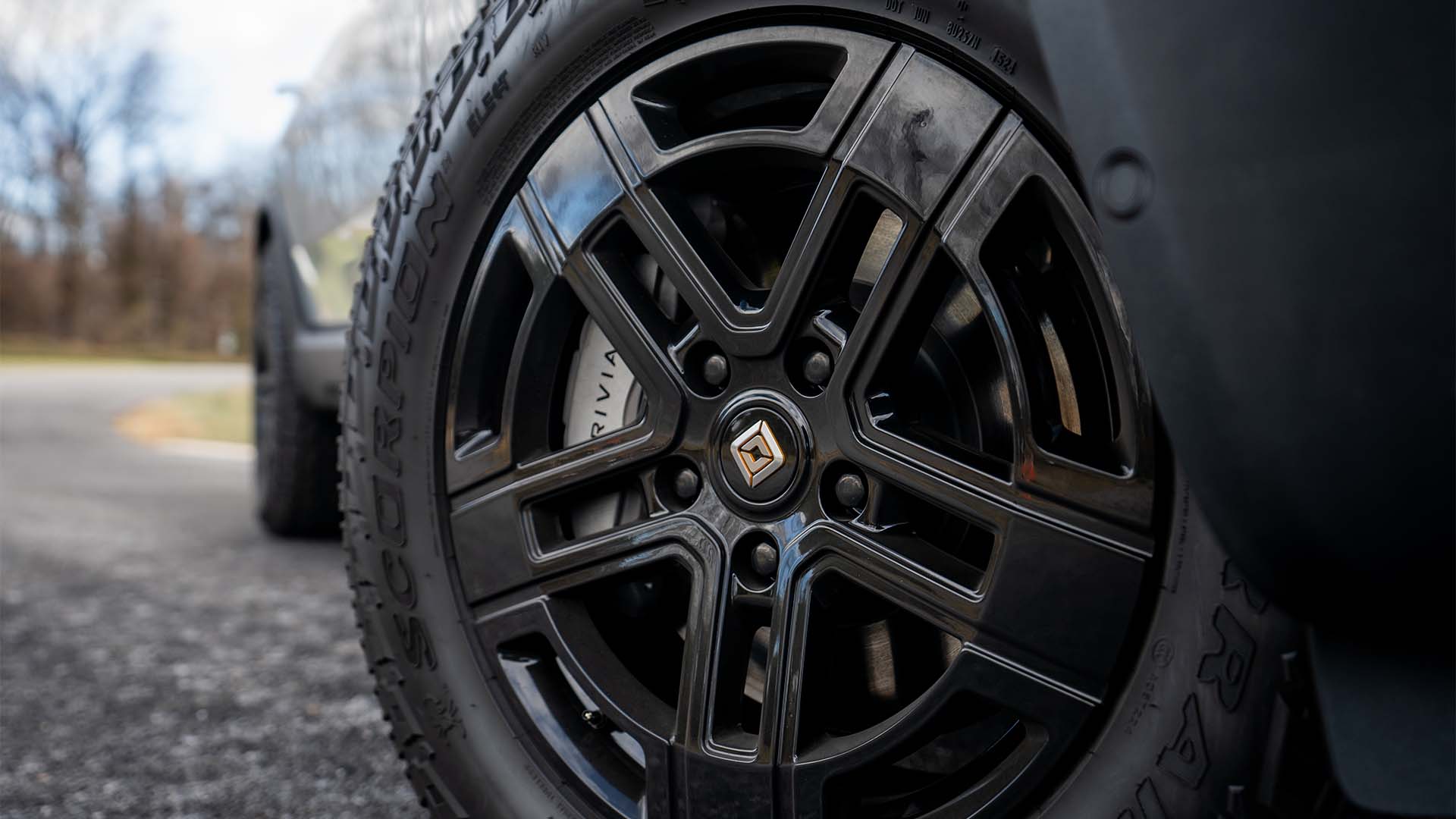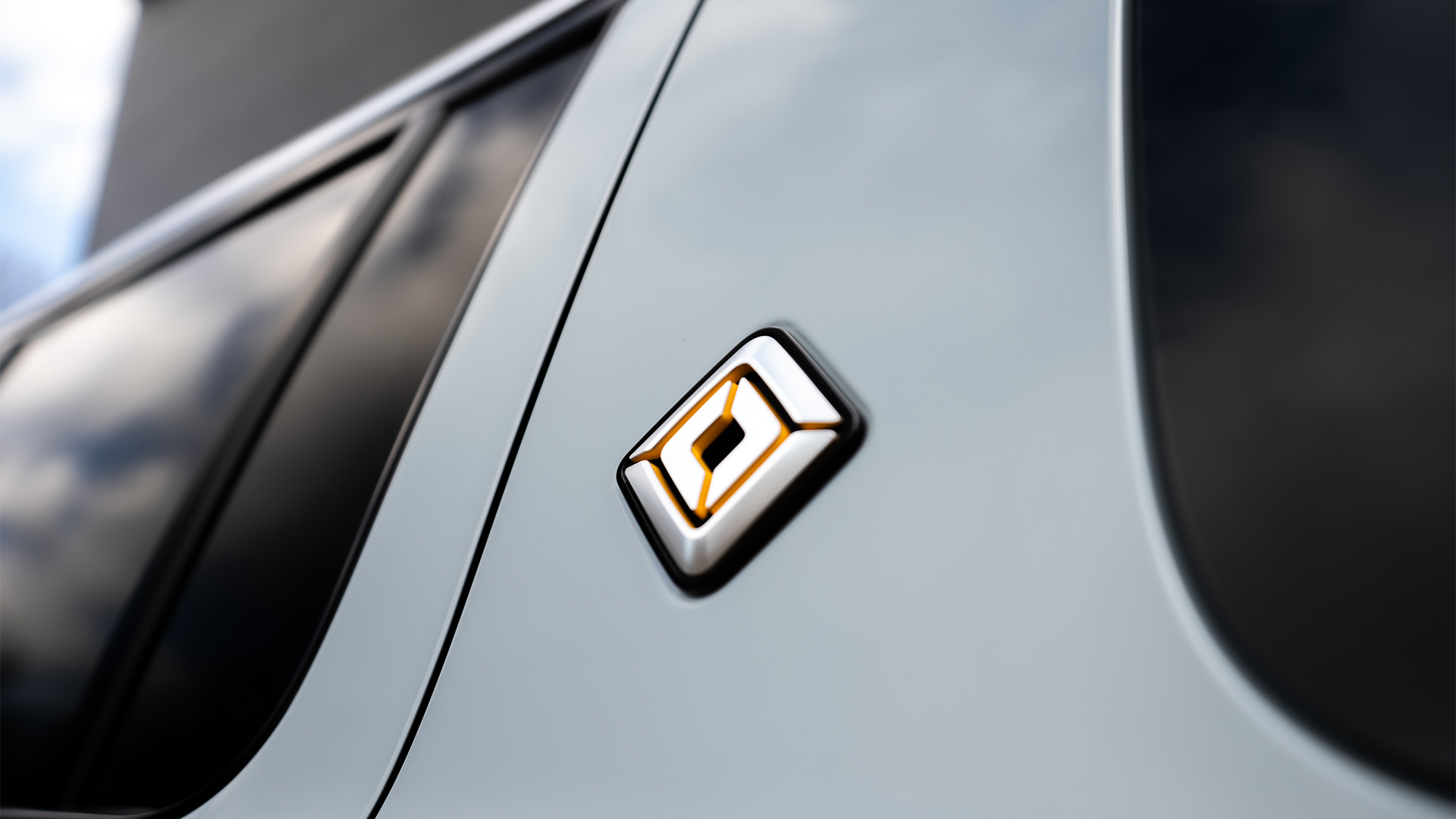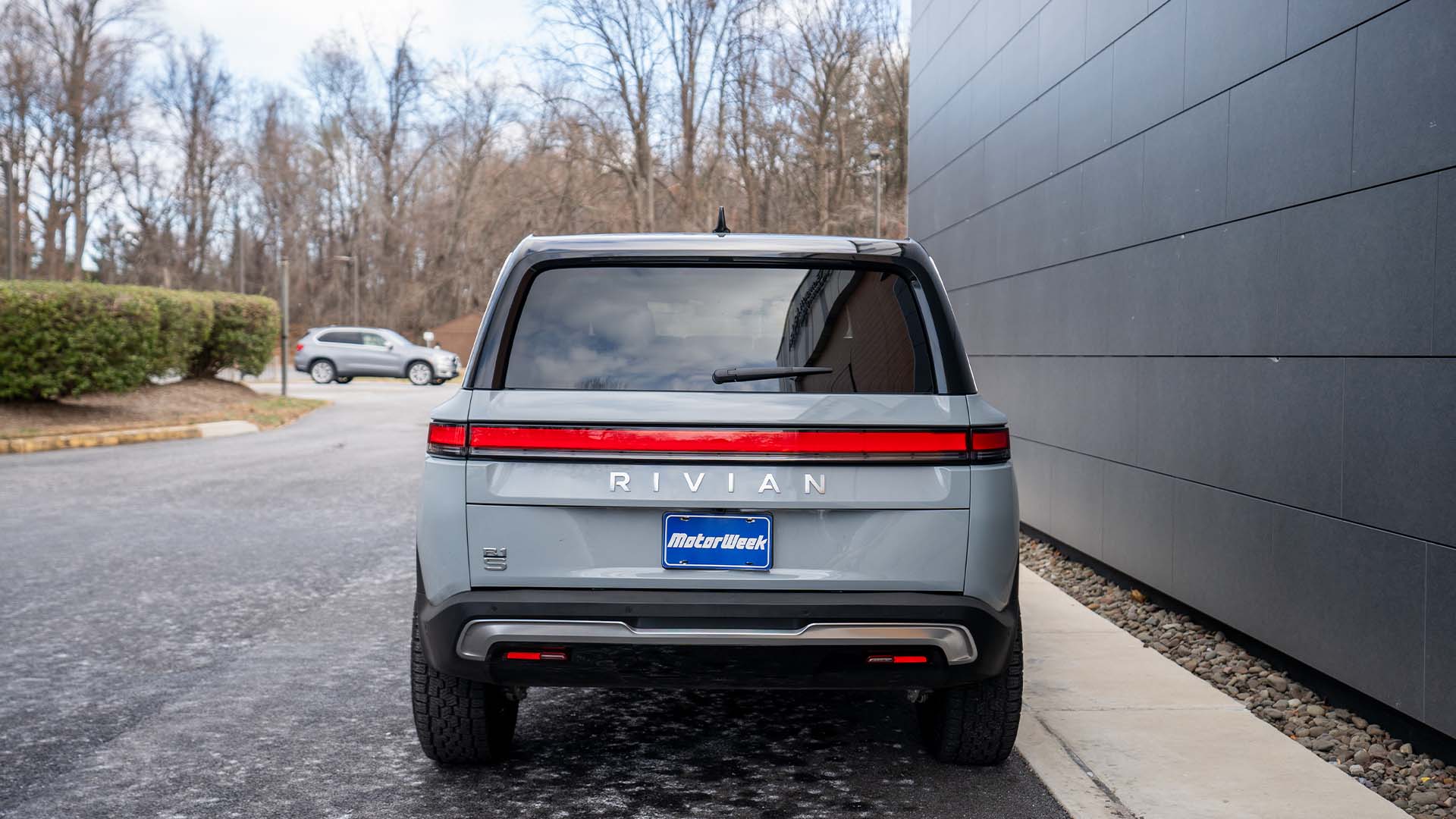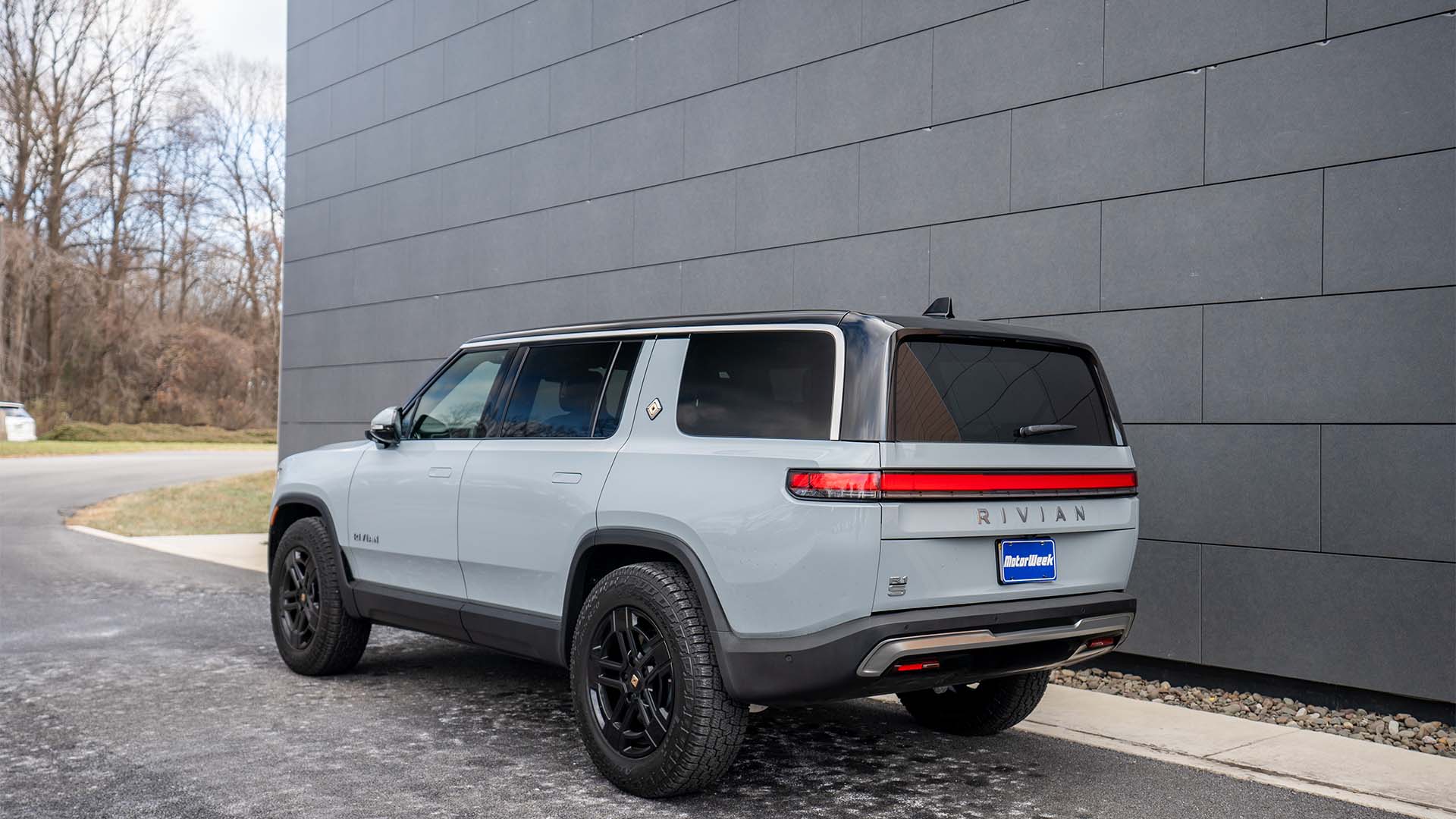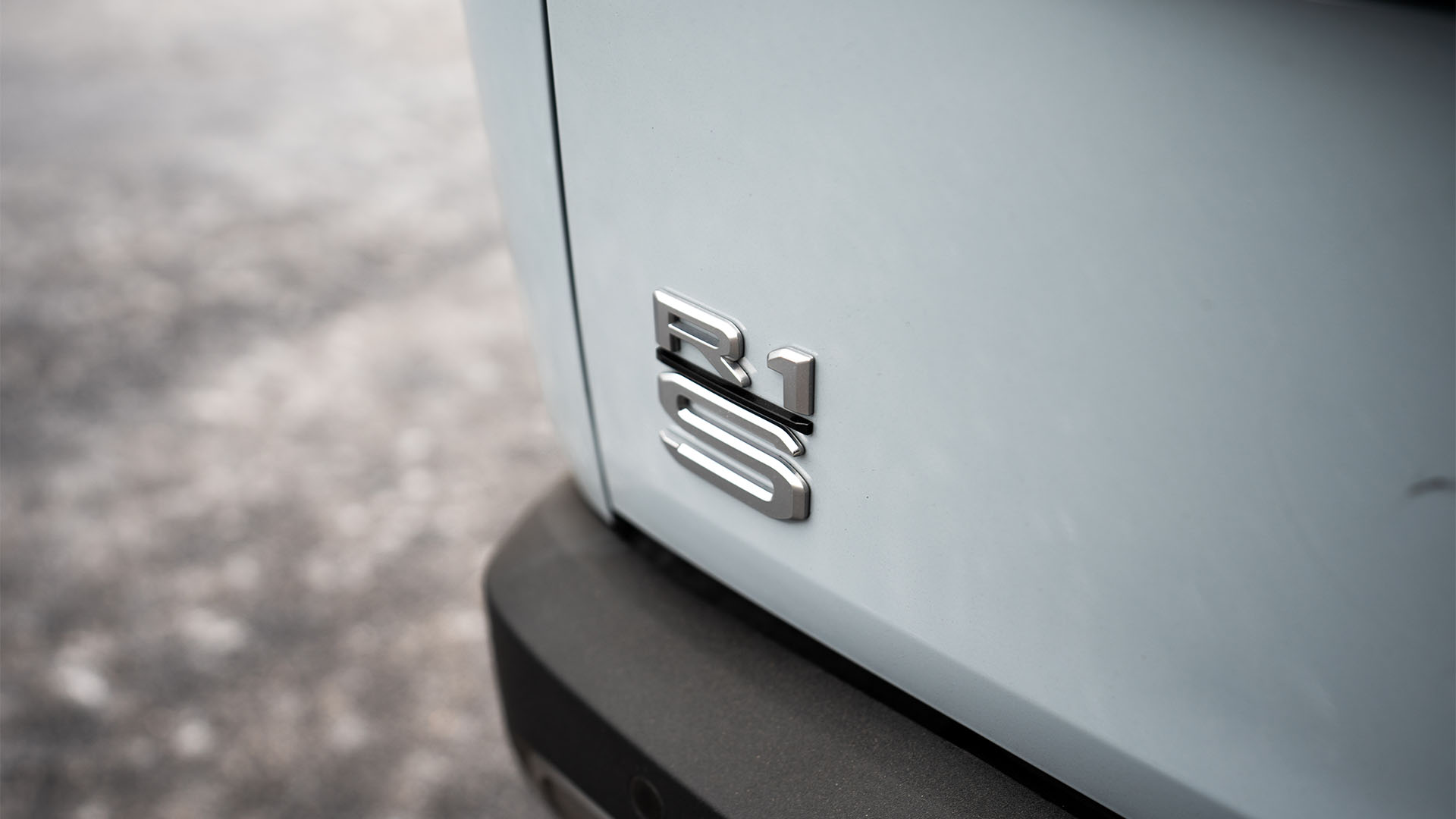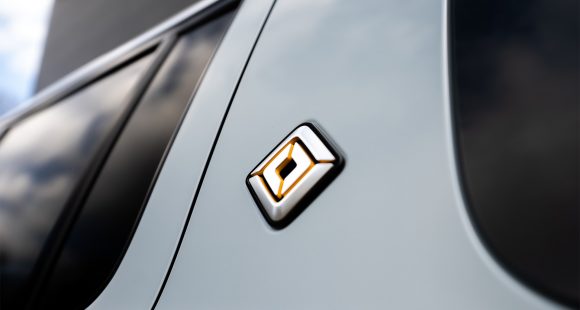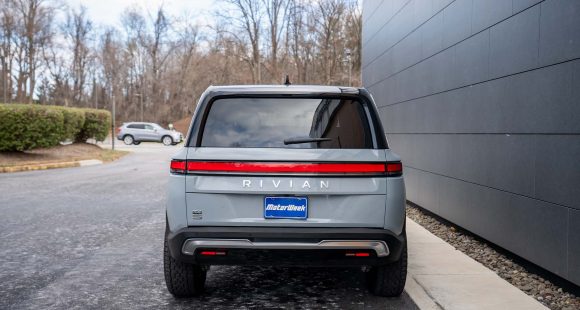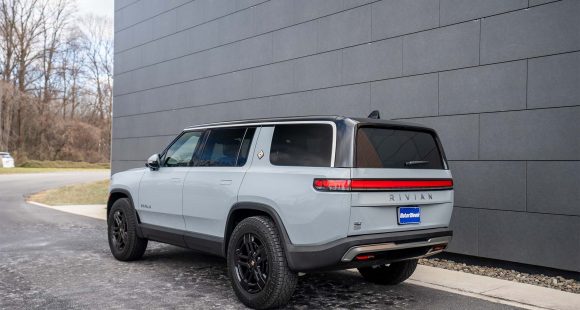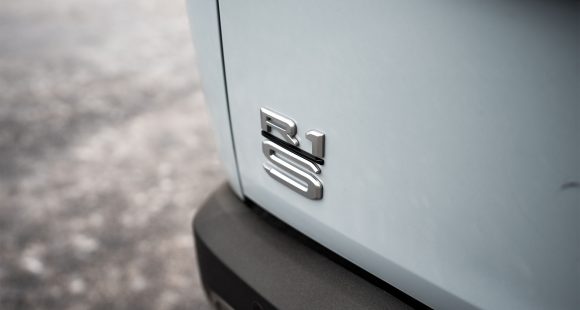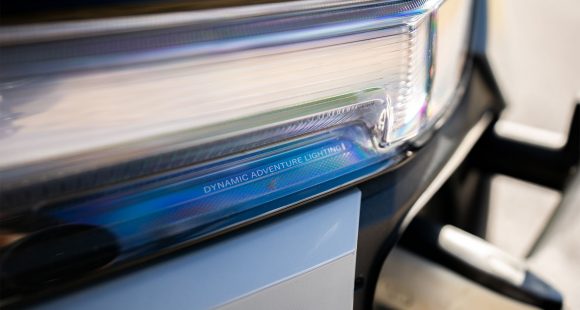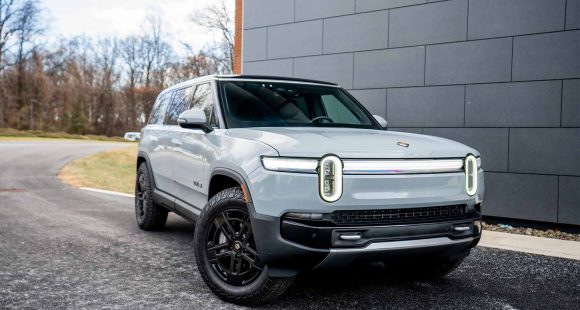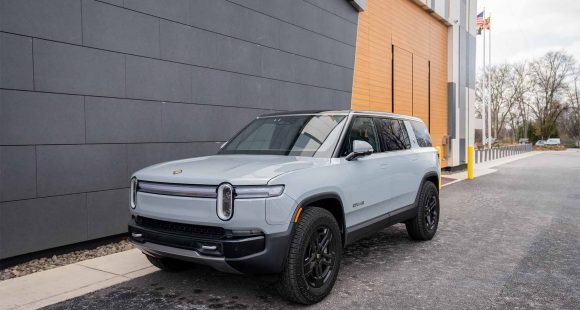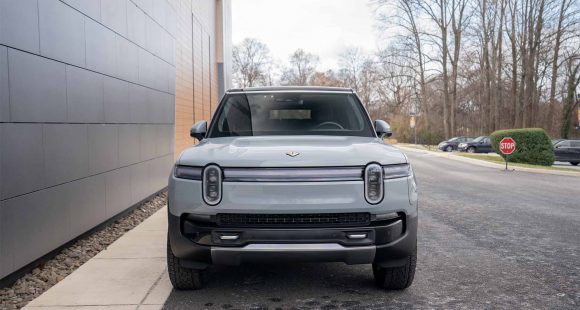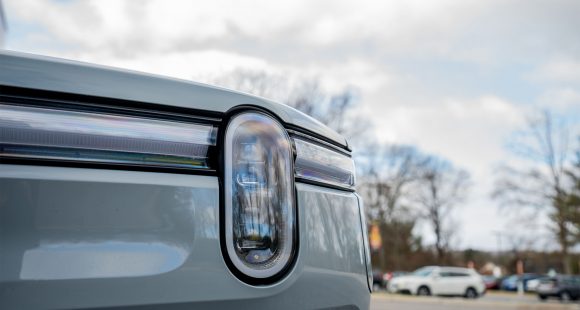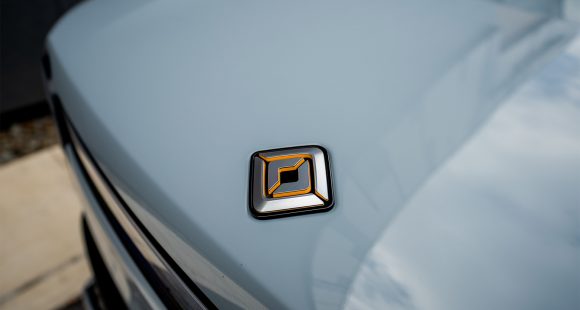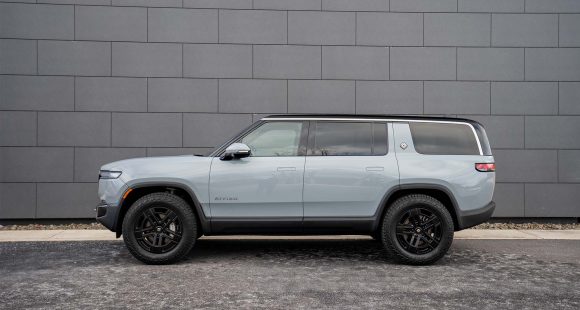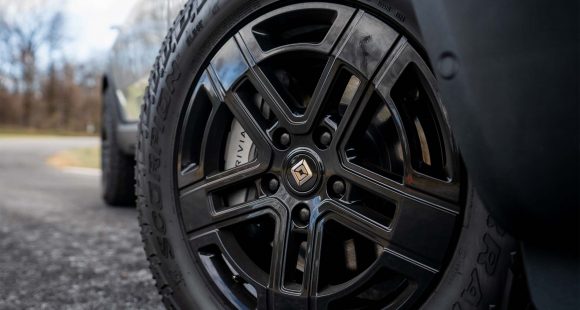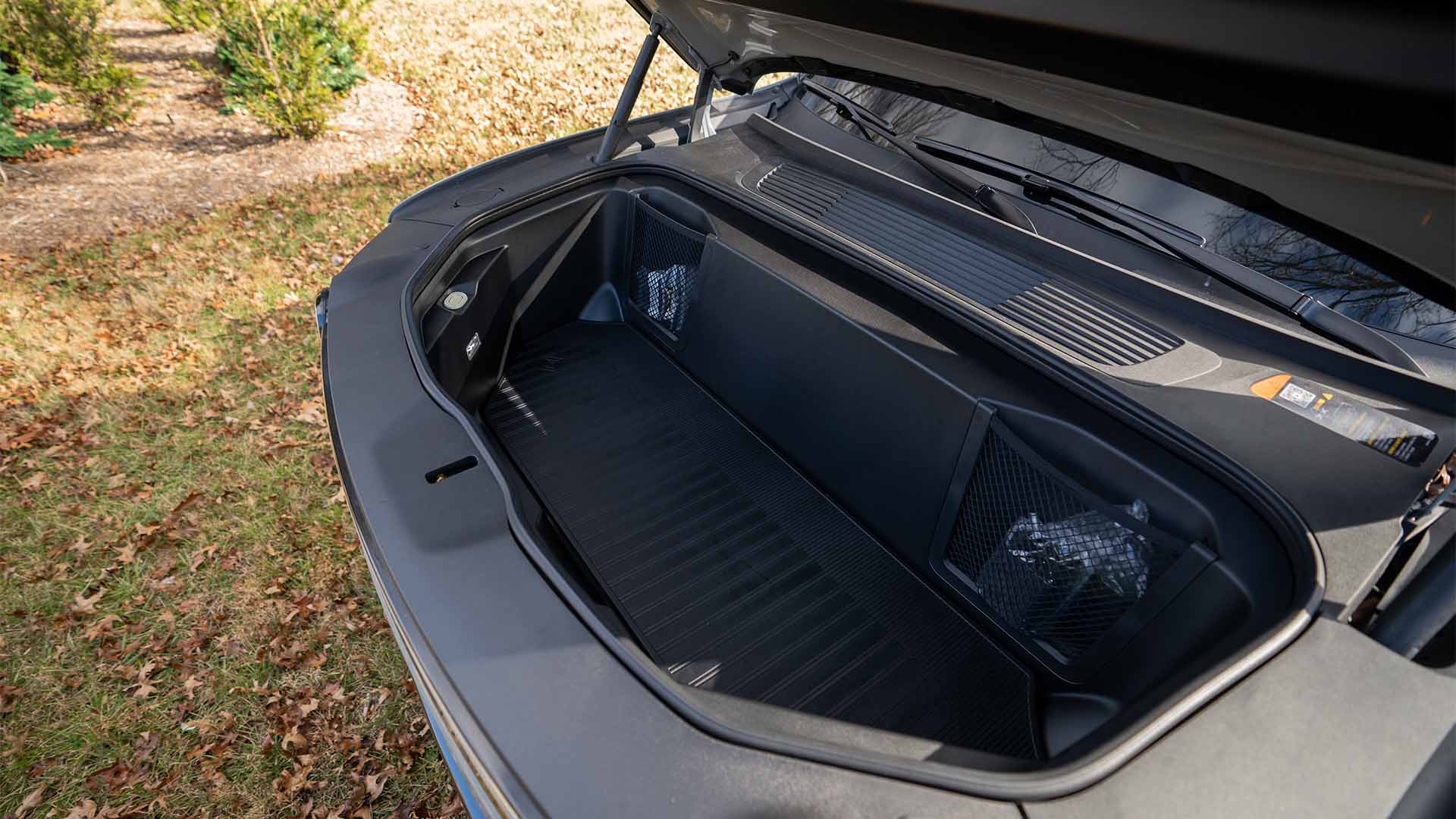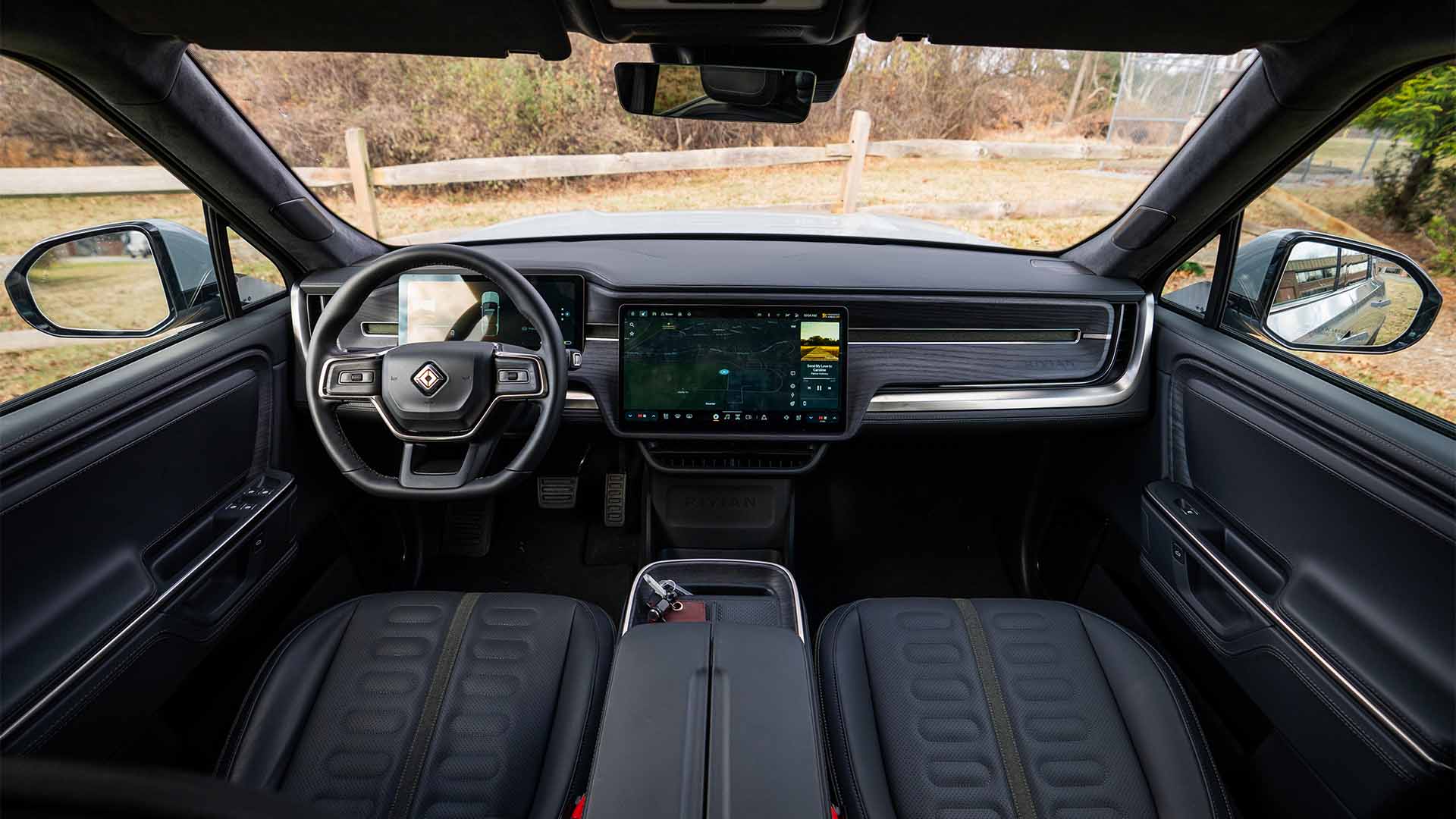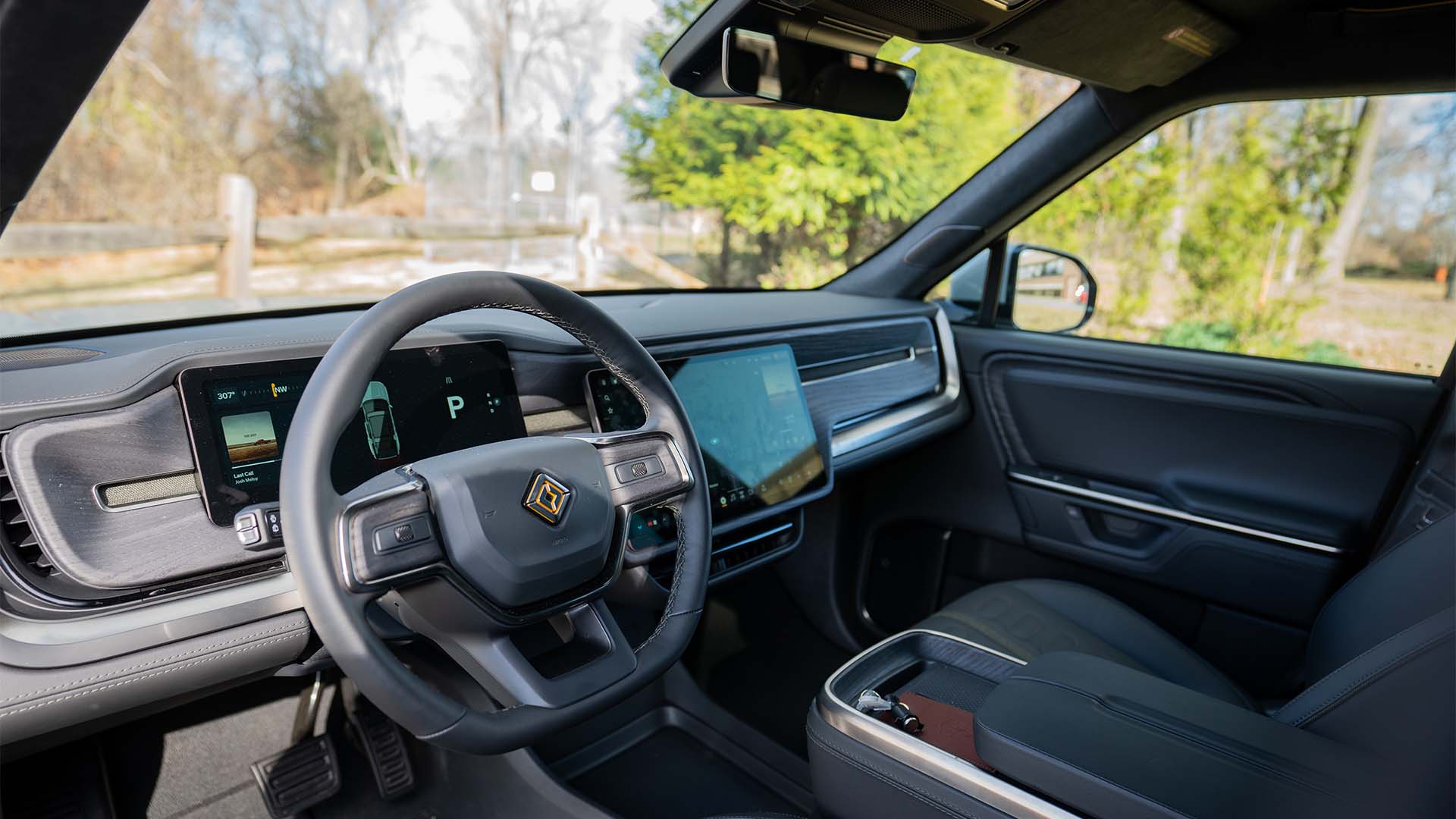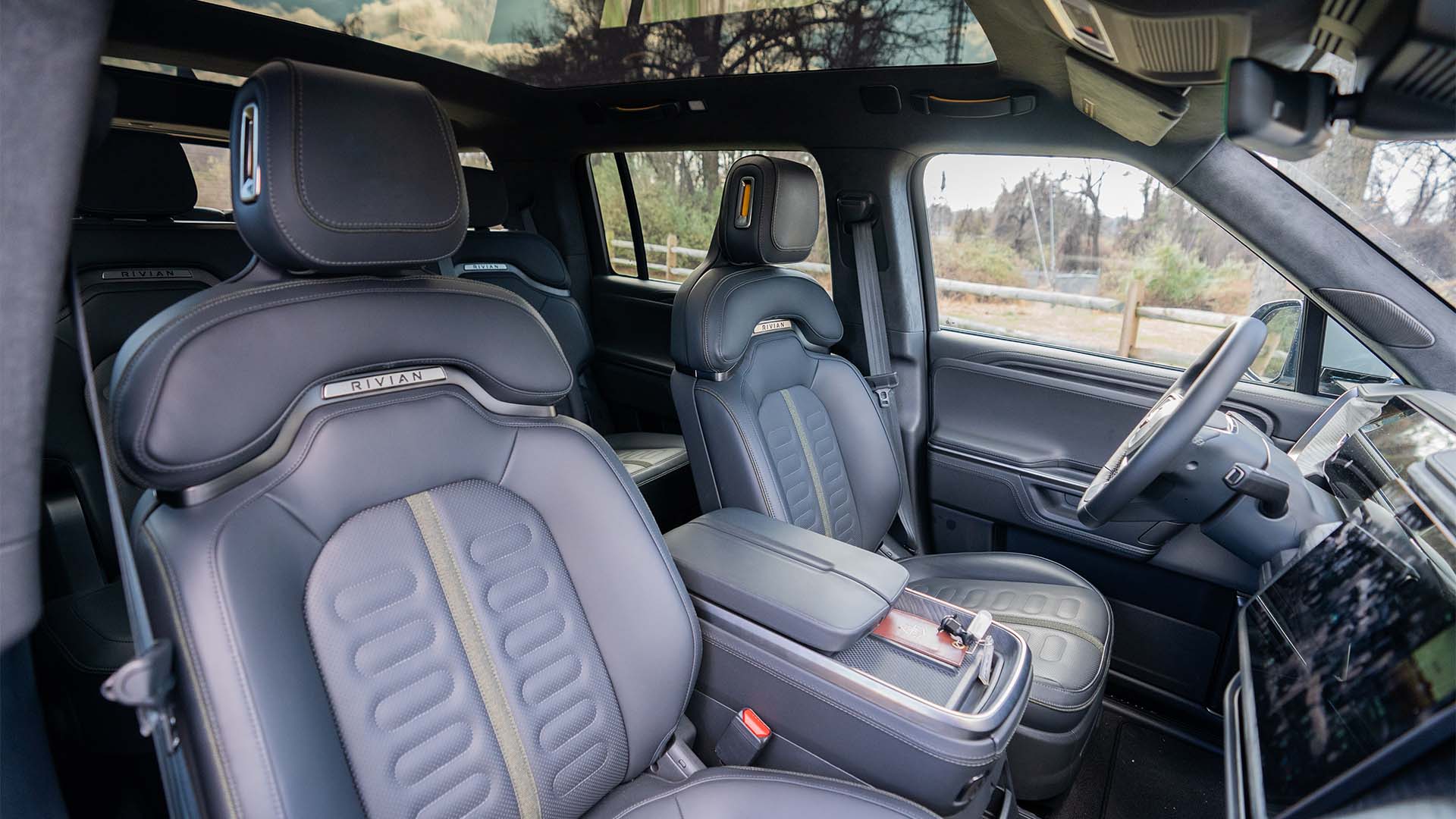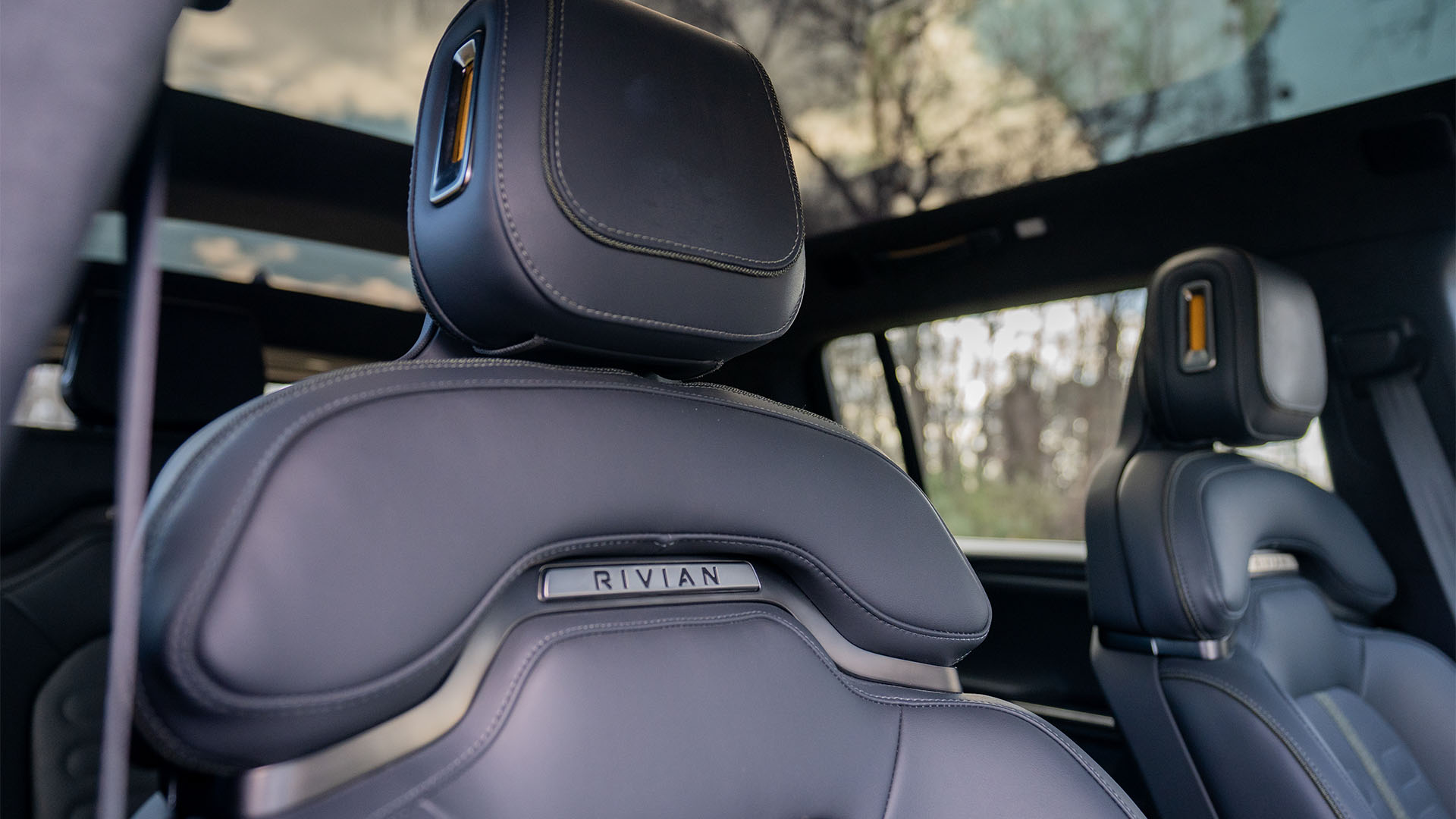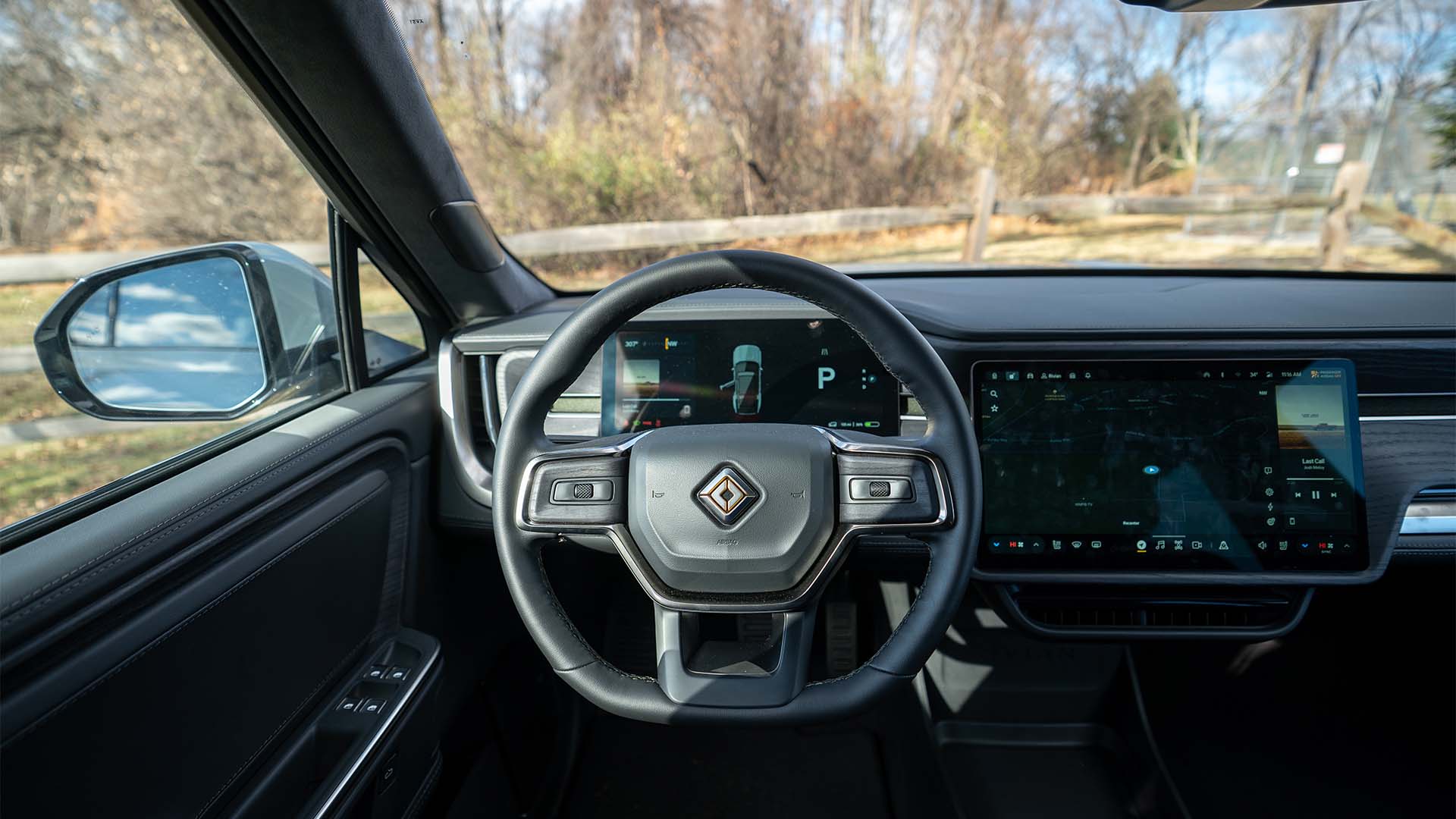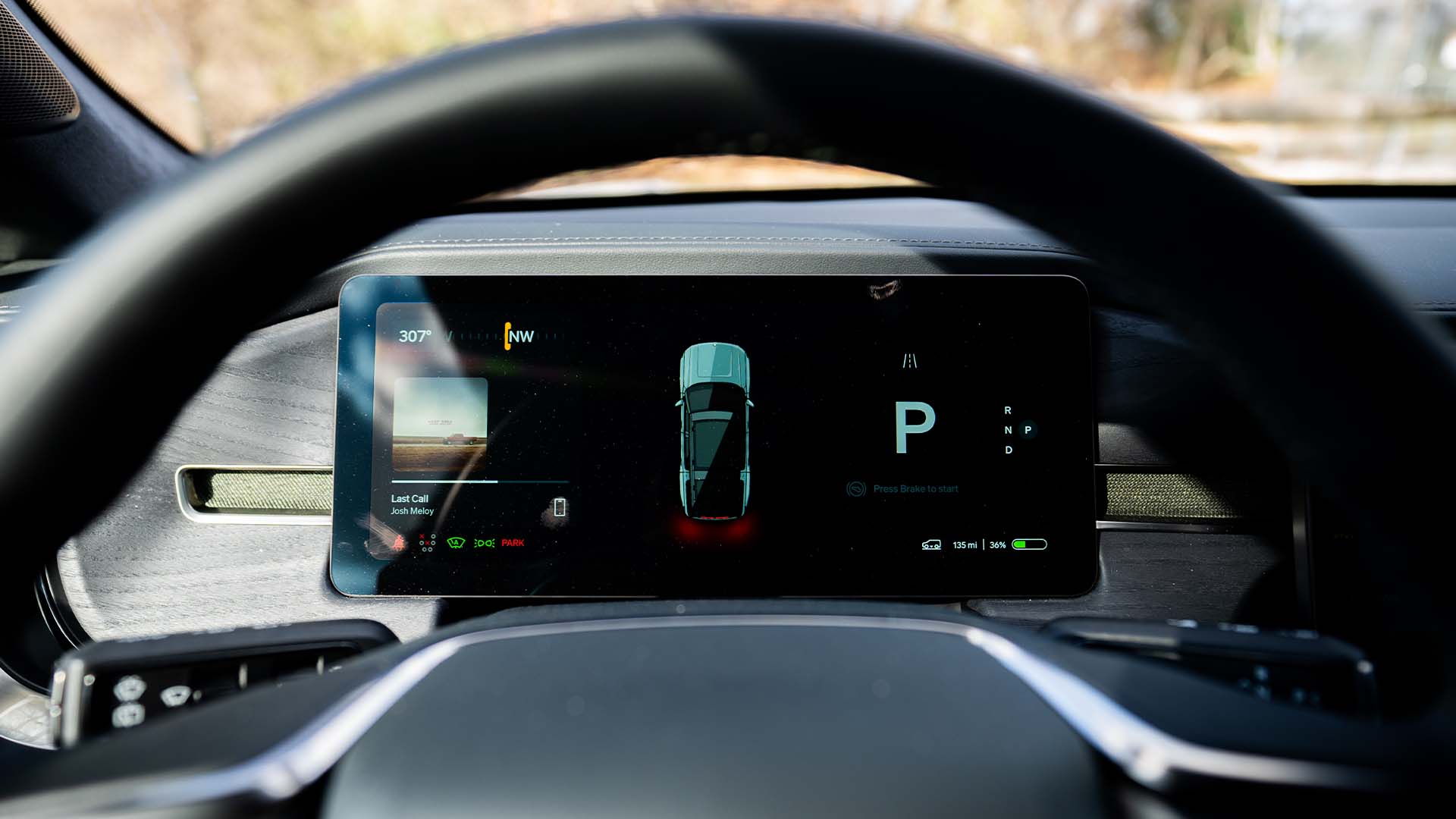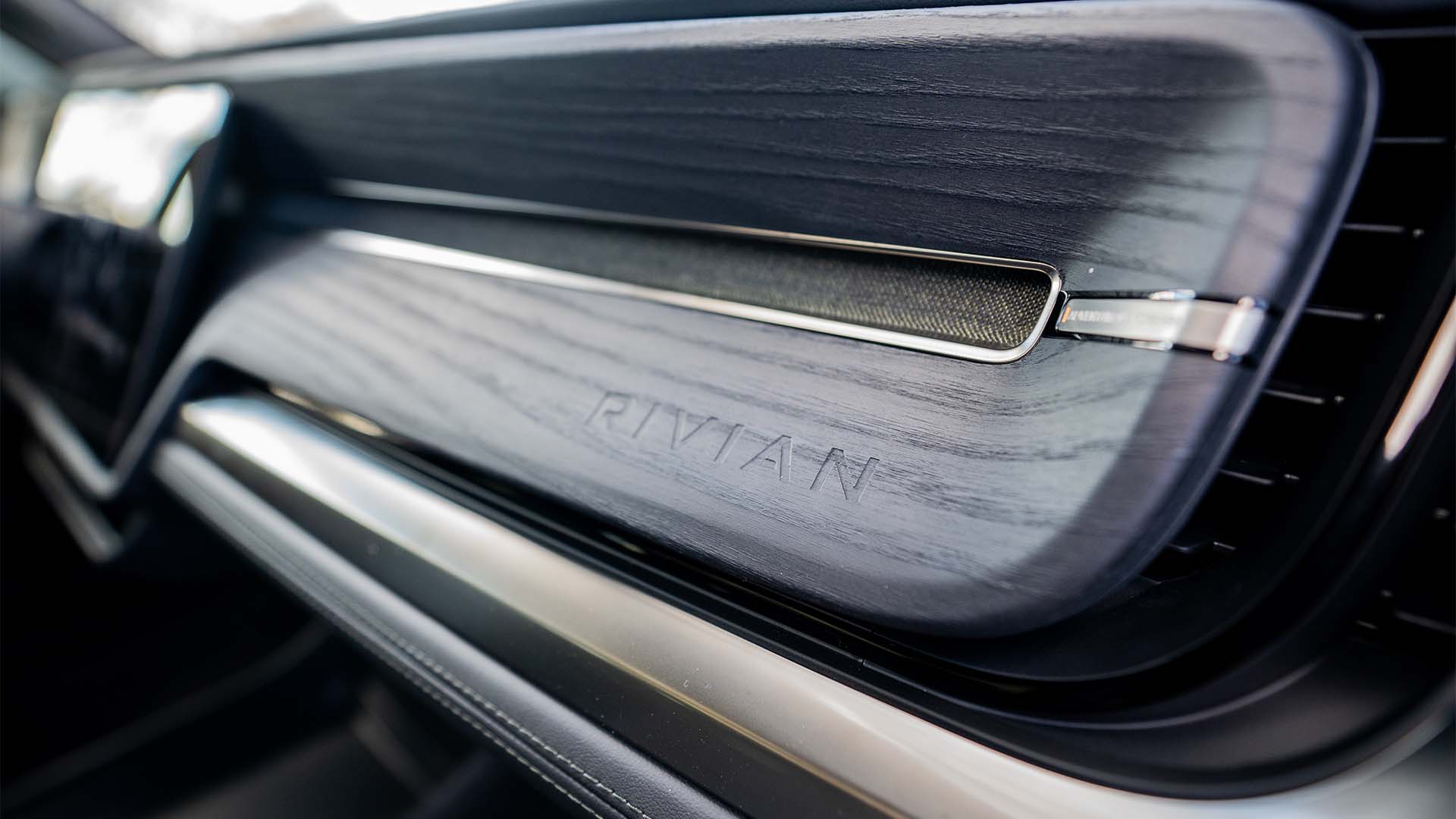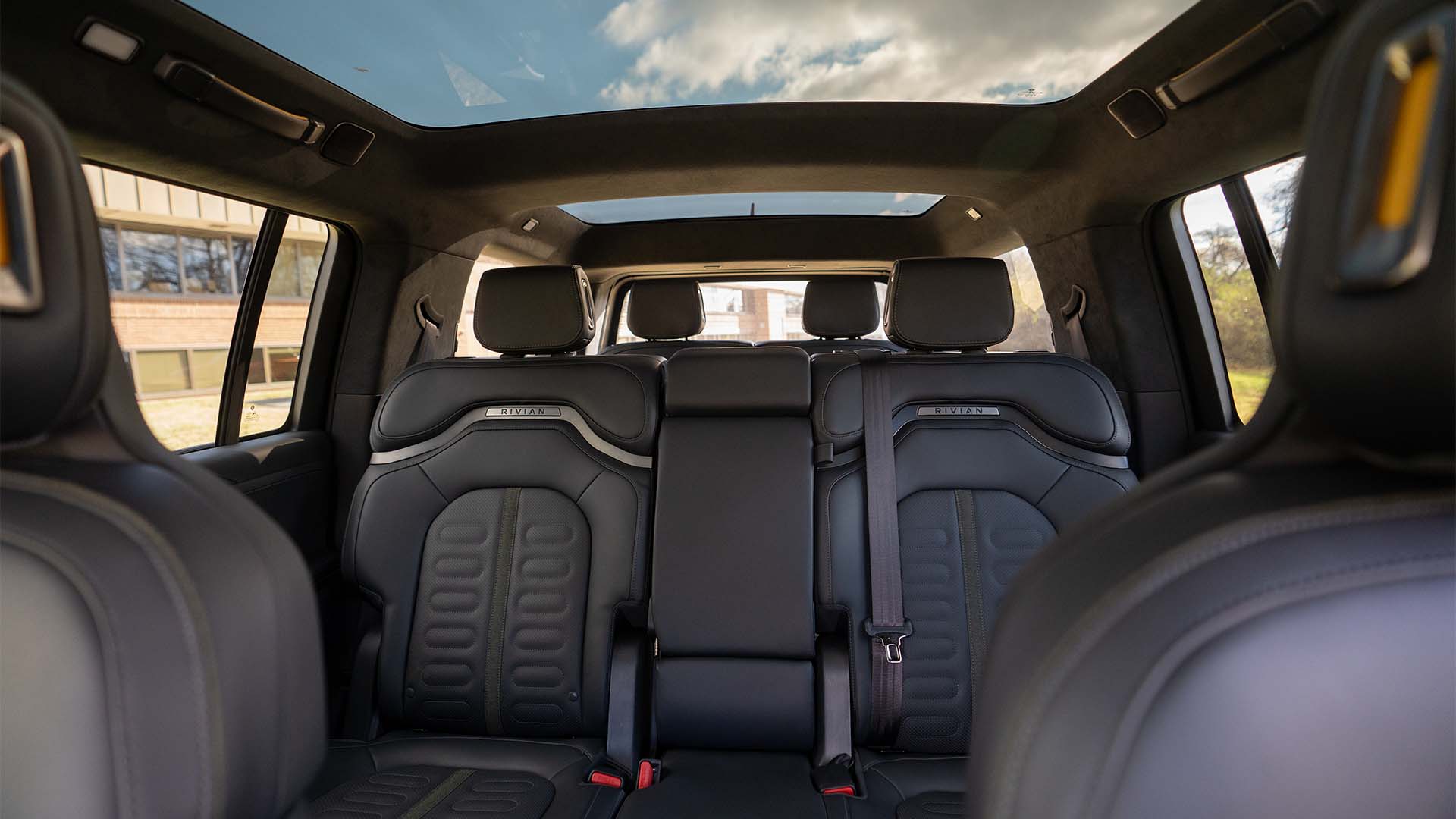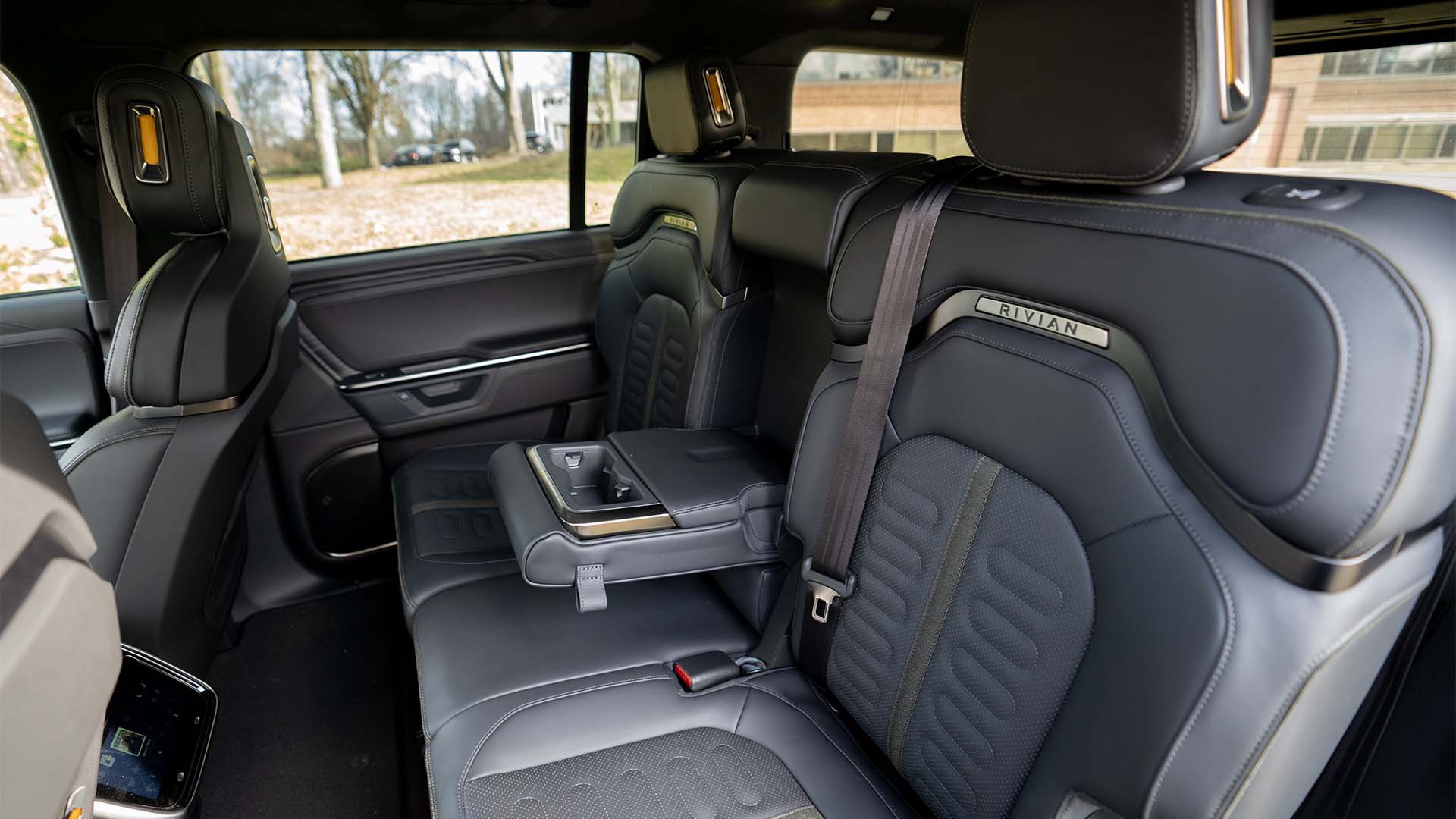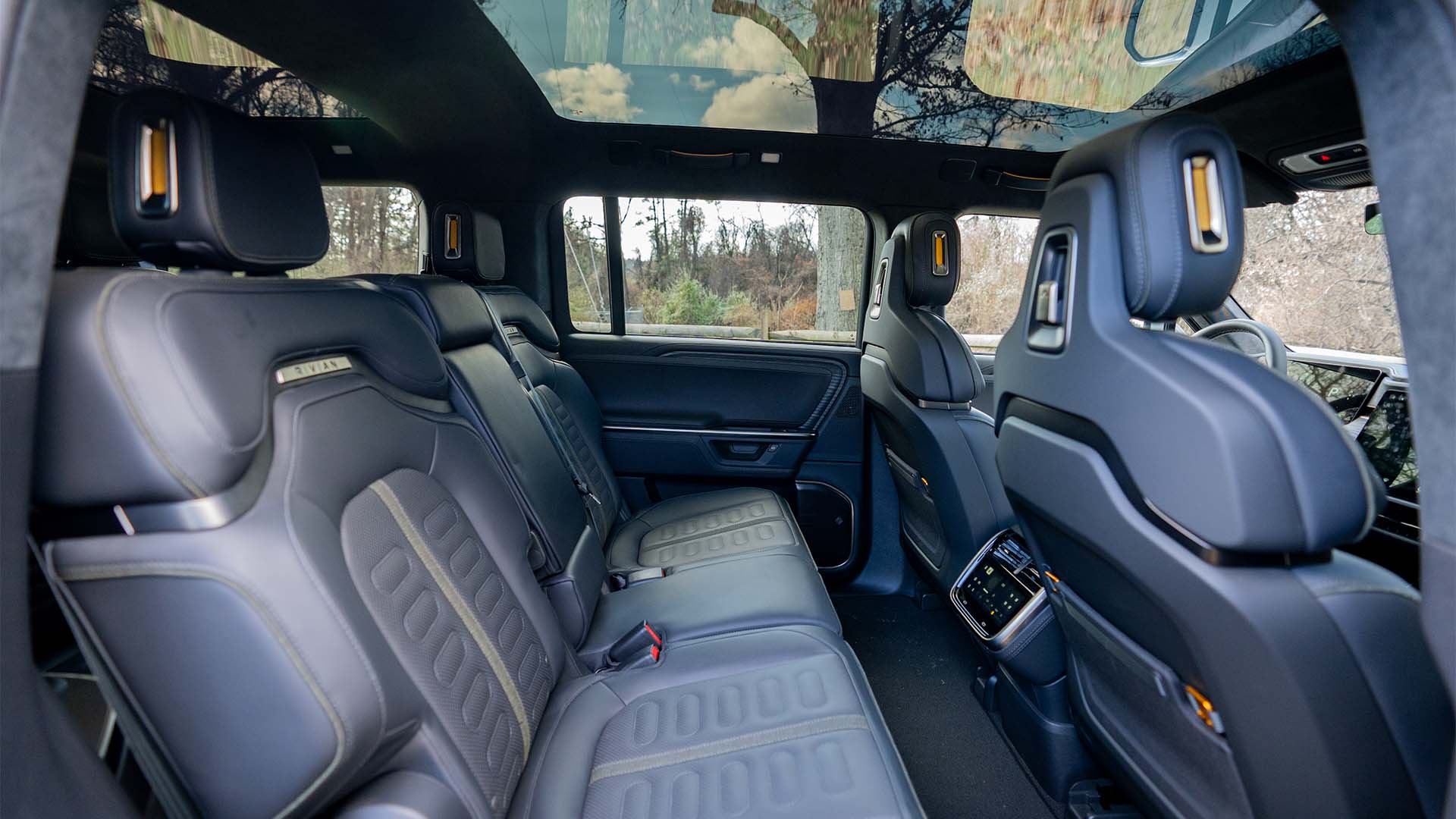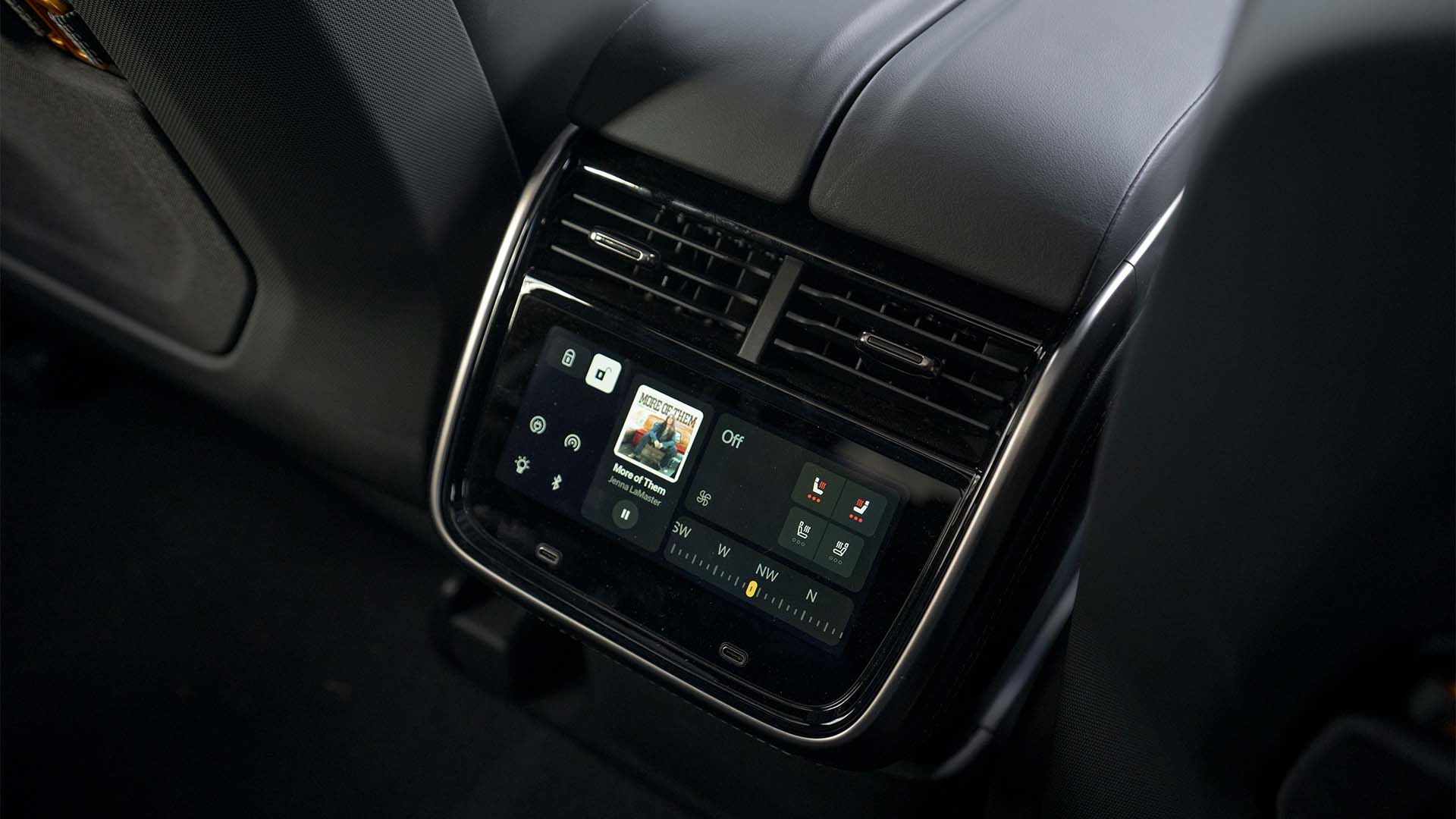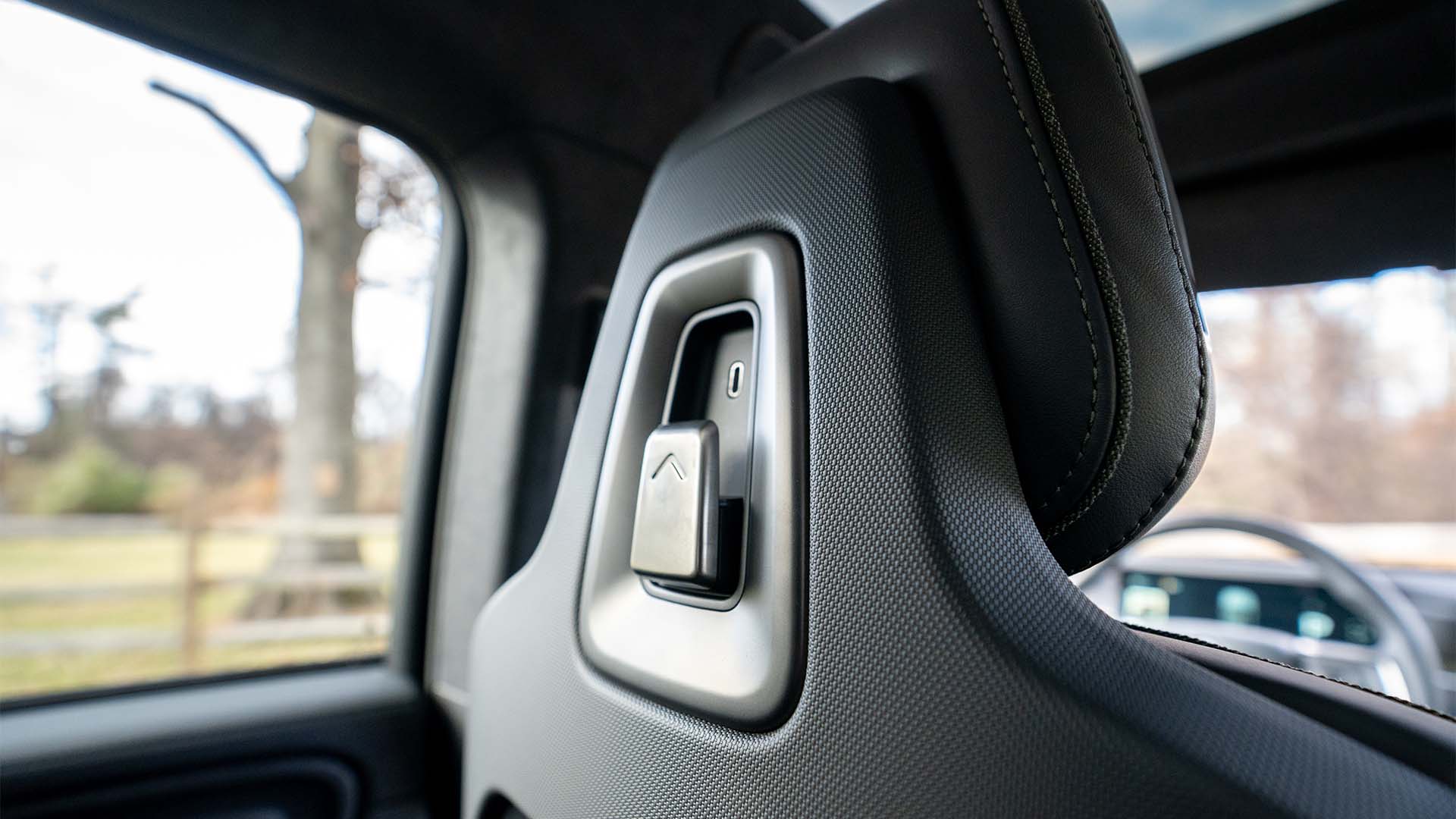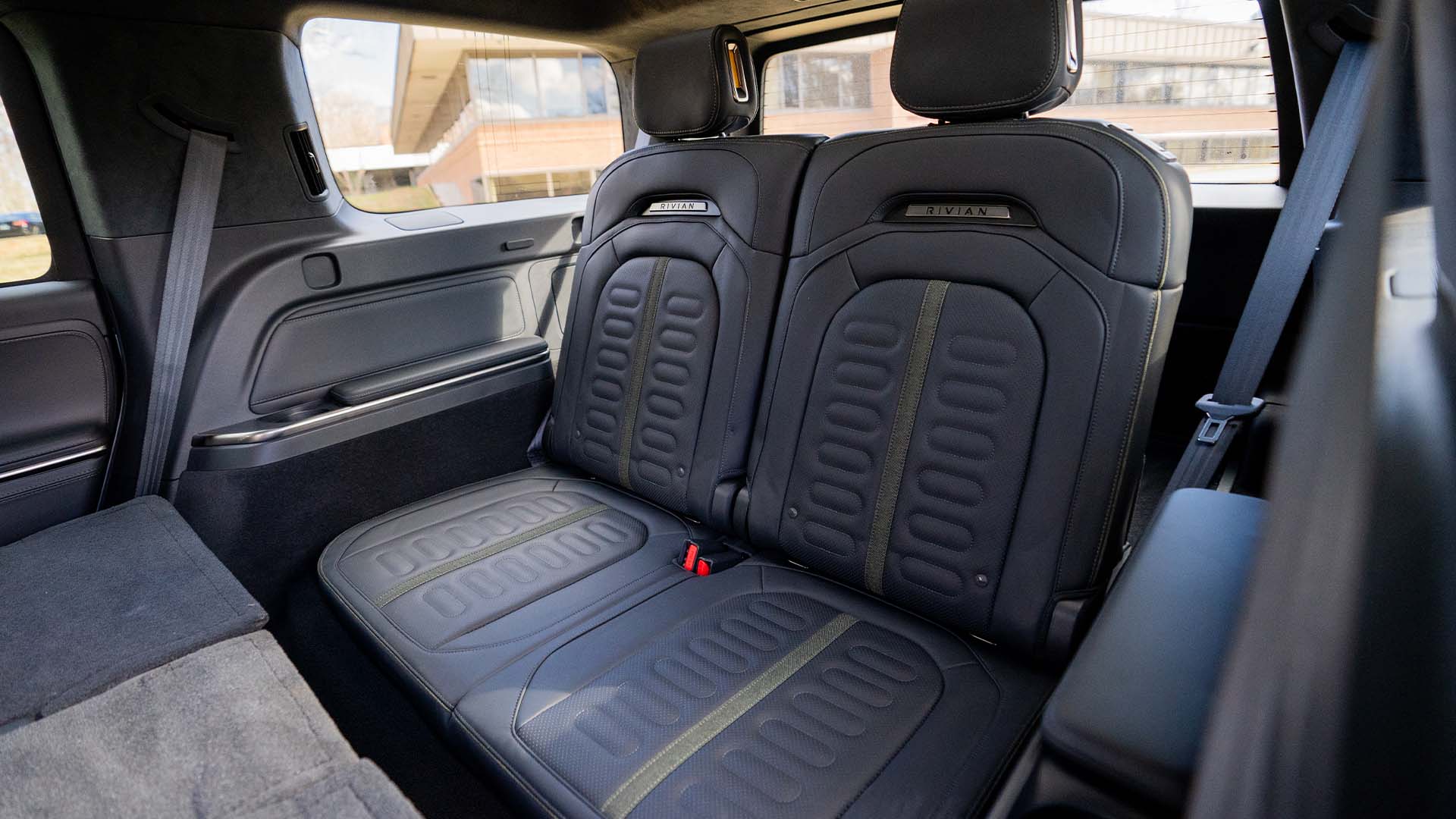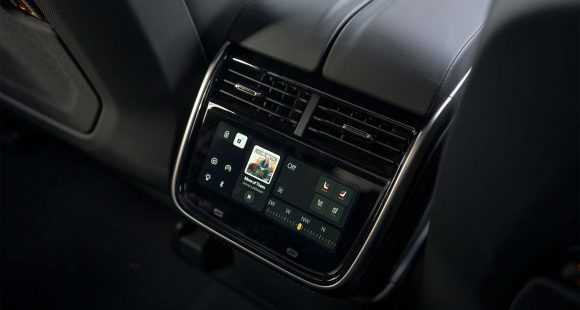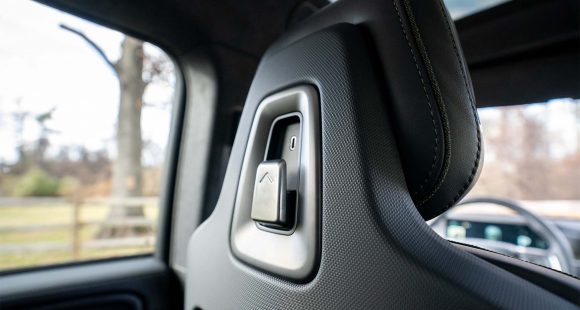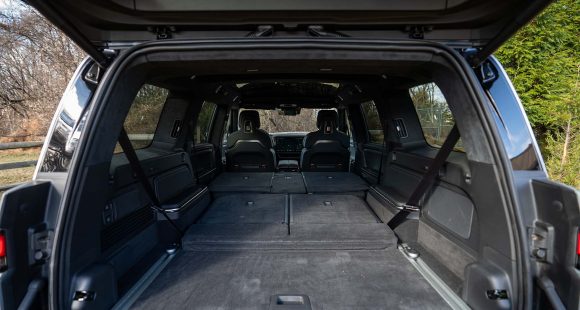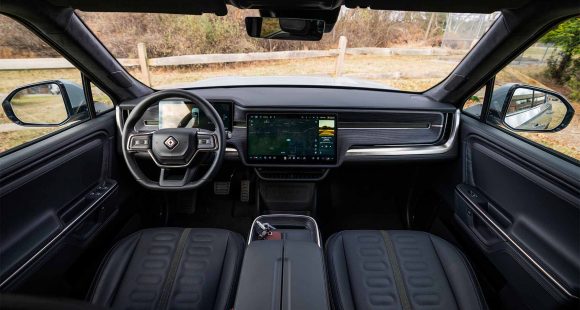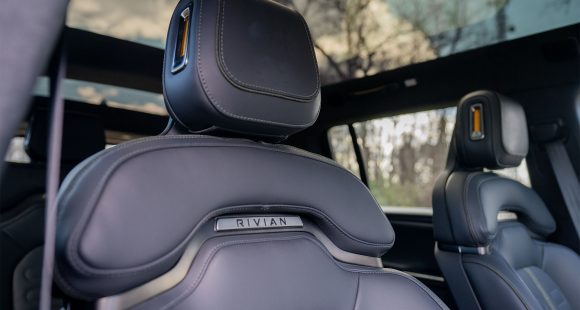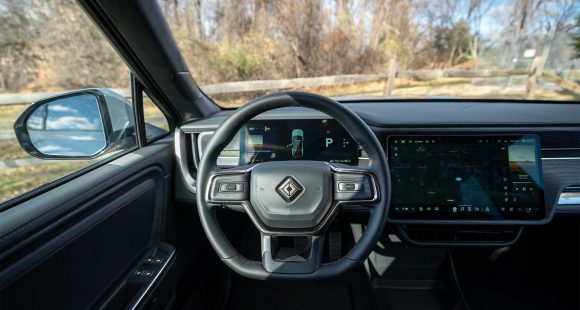2017 Toyota Prius Prime
The 2017 Toyota Prius Prime offers more, but not too much more, than the typical hybrid; though it certainly offers more than the Prius plug-in that it replaces.
By way of explanation, the EV-only range of the Prime is now 25-miles at up to 84 miles-per-hour. That’s double the range it claimed before, but still only half of the Chevrolet Volt’s EV range.
The mileage increase comes by way of both powertrain updates, enabling both motor-generators to now power the car, and a larger 8.8kWh lithium-ion battery.
The gas engine itself remains the same 1.8-liter Atkinson-cycle I4; and combined system output continues at 121-horsepower.
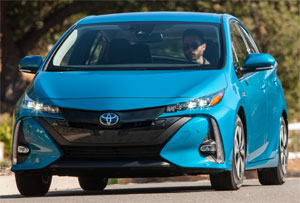 Government Fuel Economy Ratings are estimated to be 55-City, 53-Highway, and 54-Combined; with an EV-mode MPGe rating of 133.
Government Fuel Economy Ratings are estimated to be 55-City, 53-Highway, and 54-Combined; with an EV-mode MPGe rating of 133.
Charging time is a bit over 2-hours on 240-volts; about 5½-hours on standard 120. But, the battery never gets fully depleted, as normal Prius operation kicks in when EV-only range is reached. Toyota puts total range before plugging in, or topping off, at 640-miles.
The Prius Prime’s new mission calls for a new look; as both front and rear styling are distinctive from standard Prius fare.
Sharper lines, a black facia with bigger air intakes, and ultra-low profile LED headlights portray both a more eco-conscious look, and at the same time, add some sporty flair as well.
Wheels are 15-inch alloys, but with 2-tone covers that are designed to maximize air flow.
In back, things are very different with full-width LED taillights, a dual wave rear window, and a carbon-fiber rear hatch. Primarily in place for weight-saving, it also makes opening a little easier. Space beneath it, is taken up somewhat by the larger battery pack, reducing cargo capacity from 27.4 cubic-ft. to a still good 19.8.
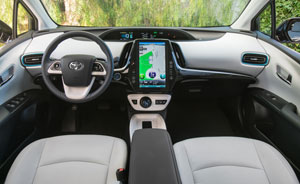 Nothing major stood out to us in terms of ride quality, during our drive time in Southern California. Prime feels smooth and composed over just about any road surface.
Nothing major stood out to us in terms of ride quality, during our drive time in Southern California. Prime feels smooth and composed over just about any road surface.
There is about 300-lbs. of additional weight; you won’t really notice it so much in handling situations, but you can certainly feel it off the line. There’s a lot of buzzing and whirring going on, but not much propulsion; expect a 0-60 time of 10 seconds plus.
Shuffling between power sources remains as seamless as always; and at cruising speeds, except for some tire noise, things are pretty quiet. Visibility remains very good all around.
Overall, the interior is just fine, even if our car’s, heated, simulated-leather covered seats were still not truly long distance comfortable. There are a host of tech upgrades for Prime, and trim structure differs from the standard Prius; going from Plus to Premium to Advanced. All except for Plus trim sport a larger Tesla-like 11.6-inch central touchscreen. It really blends in quite nicely and looks great. But we found actual function to be a little laggy.
There’s only adequate width for two in the rear seat, but plenty of leg room to be found, even if the slopping roof takes a toll on adult headroom.
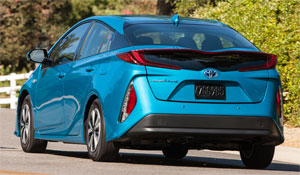 While the Chevrolet Volt may offer more range, the Prime has quite an advantage when it comes to pricing, as it is still a very reasonable $27,965. Whether that’s worth the $2,400 over a base Prius depends on your green driving desires. Top level Advanced trim moves closer to Volt at $33,965. Regardless, the Prius, in all of its iterations remains a lot of eco-minded car for the money.
While the Chevrolet Volt may offer more range, the Prime has quite an advantage when it comes to pricing, as it is still a very reasonable $27,965. Whether that’s worth the $2,400 over a base Prius depends on your green driving desires. Top level Advanced trim moves closer to Volt at $33,965. Regardless, the Prius, in all of its iterations remains a lot of eco-minded car for the money.
With that being said, it’s hard to envision the 2017 Toyota Prius Prime being a major player. As it still seems to appeal to the few people who want a bit more battery range than a traditional hybrid can offer, but aren’t yet ready to make the jump to a full EV. But there’s no denying it’s a better option than the preceding Prius plug-in, which may be enough to make it a “prime mover” for the Toyota faithful.
Specifications
- Engine: 1.8 liter
- Horsepower: 121
- 0-60 mph: 10.0-11.0 seconds
- EPA: 55 mpge city / 53 mpge highway,
2025 Rivian R1S
Major Reboot for Rivian R1S
With just about every mainstream carmaker now onboard with battery-electric vehicles, EV-only brands are hoping there are still plenty of people out there willing to think outside the box. So, let’s see if Rivians latest R1S utility can make the case for taking the EV road less traveled.
Big changes have happened in the short time since the Rivian R1S first hit the streets three years ago. As for 2025, there are updates that touch just about every aspect of the vehicle. Yes, despite looking almost exactly the same outside, Rivian claims that beneath the surface, their entire electrical architecture has been significantly updated, eliminating a whopping mile and a half of wiring and 10 computer assemblies, allowing for more efficient operation.
But look closely and you will see their signature vertical oval headlights are updated with a new matrix of LED lights that can cycle individual elements on and off to provide maximum illumination where you need it without distracting oncoming drivers.
Not much change in the look of the interior either, but the synthetic leather upholstery is still very nicely done, though most touchpoints feel more rugged than luxury minded. With the exception of a couple controls on the steering wheel, you do still have to do almost everything on the R1S’s 15.6-inch touchscreen, but the user interface has been improved. So, while we do wish they could have reverse-engineered a knob or two into the mix, we realize full touchscreen interface is just what people expect in their high-end EVs these days, and at least it works better than before. And the gauge display still wows you with the amount of information it displays and is mounted high enough that no additional head-up display is needed. A new Rivian Autonomy Platform uses 11 cameras, five radars and A.I. for self-driving, or just to monitor what’s going on around the vehicle even when it’s parked.
This [EV] really feels fast, sitting you up high and throwing you back in your seat with authority.
Rivian has also given the R1S a substantial suspension revision with new spring rates, bushings, and mounts; along with new tuning for the adaptive dampers and roll-mitigation system. It does provide a more balanced street attitude, but it still rides like a truck. That’s great if that’s the experience you’re looking for; not as ideal if you’re looking for more of the smooth luxury-style treatment.
All R1Ss are all-wheel drive, but there’s a wide variety of powertrain options including a new Tri-Motor setup. Outputs range from the standard Dual-Motor’s 533 horsepower to the Quad-Motor’s impressive 1,025. There are several battery packs as well, delivering as much as 410 miles of range, giving the R1S the highest rating of any SUV on the market right now. Our Adventure trimmed tester featured the 665-horsepower Performance version of the Dual-Motor arrangement, with the Max battery and 20-inch wheels with all-terrain tires.
Theoretically, that setup is rated for 370 miles, but perhaps we were enjoying the “performance” theme too much as our results were well short of that, using 68% of the battery to drive only 189 miles, putting our estimated range around 278 miles. Using 43 kilowatts of electricity for every 100 miles earns the R1S a fair efficiency rating.
But all was forgiven at our Mason Dixon test track when this Rivian started blasting us to 60 in 3.8 seconds. Yes, there are faster EVs, but this one really feels fast, sitting you up high and throwing you back in your seat with authority, while the rear of the truck squats down substantially before hurling you off the line and down the track. Power delivery stayed strong the entire time, cranking away until we cleared the quarter-mile in 10.5 seconds at 108 mph.
Despite this utility’s substantial size and weight, we were able to keep a pretty fast pace through the cones of our handling course. The all-terrain tires obviously didn’t grip the pavement as well as all-seasons would, but the low center of gravity kept things very flat. Yes, it does feel very heavy, but the brakes were more than up to the task, stopping us from 60 mph in a very short 103 feet with surprisingly little nosedive and no fade.
Pricing starts at $77,700 for the Dual-Motor with Standard battery pack; our Dual-Motor Performance with the Max battery and All-Terrain Package came in just over $102,000.
While Rivian has had great initial success; sustaining that success will be a much tougher task. But, if they continue to put as much effort into improving their products as they have here with the 2025 R1S, we think their winning streak will only accelerate.
Specifications
As Tested
- Motor Setup: Dual Motor
- Battery Size: 141.5 kWh
- Horsepower: 665
- Torque: 829 lb-ft
- EPA Range: 370 miles
- 0-60 mph: 3.8 seconds
- 1/4 Mile: 10.5 seconds at 108 mph
- Braking, 60-0 (avg): 103 feet
- MW Test Loop: ~278 miles








